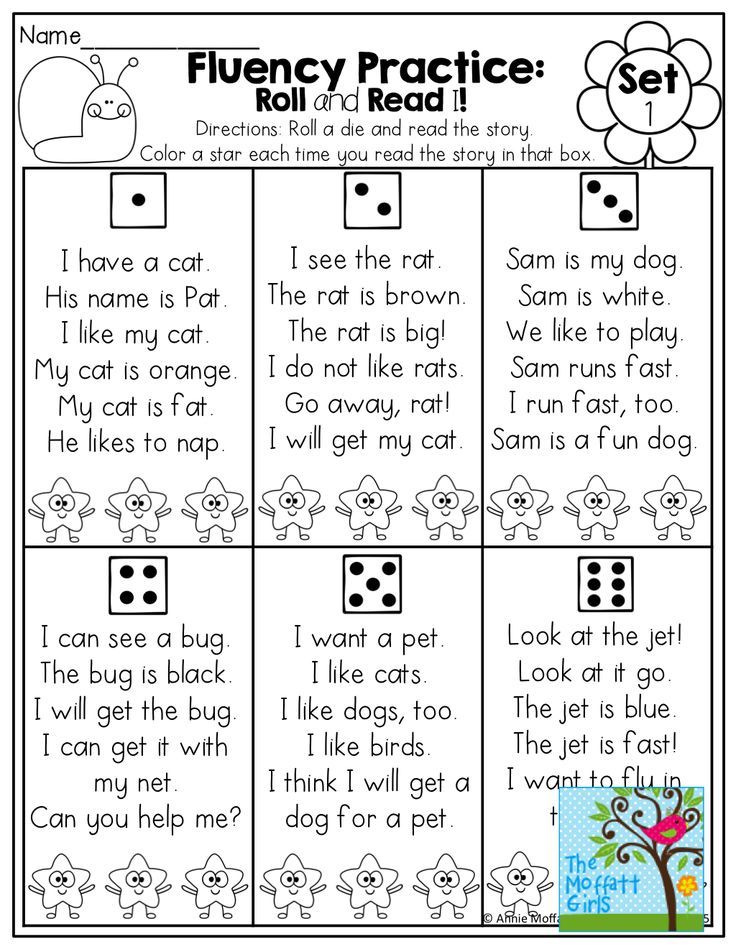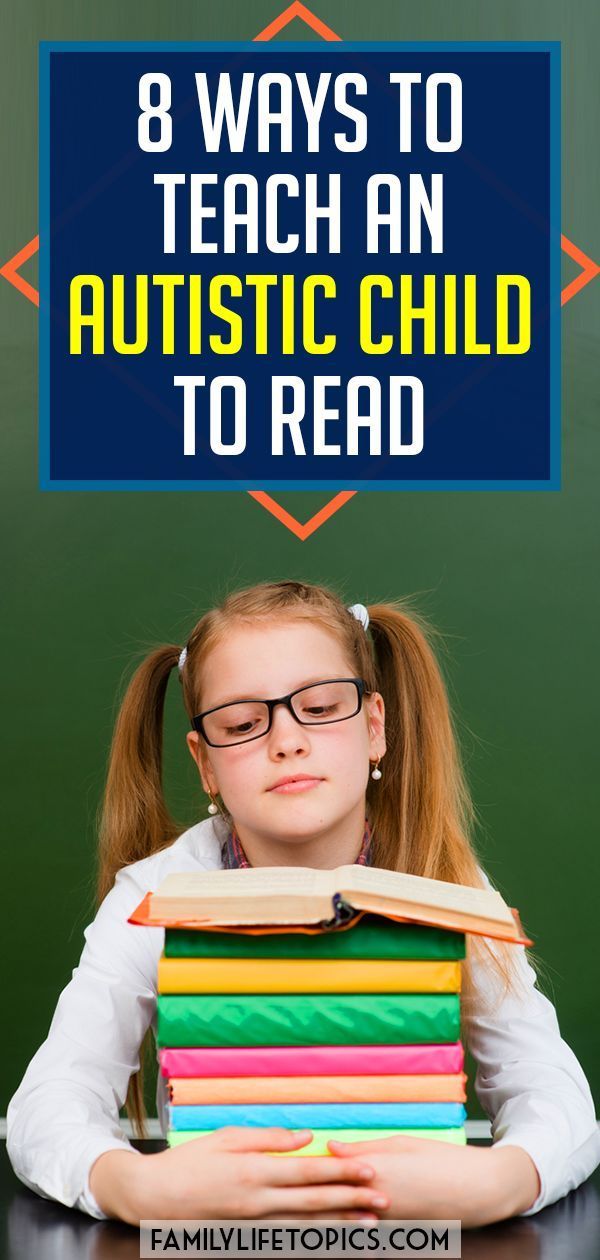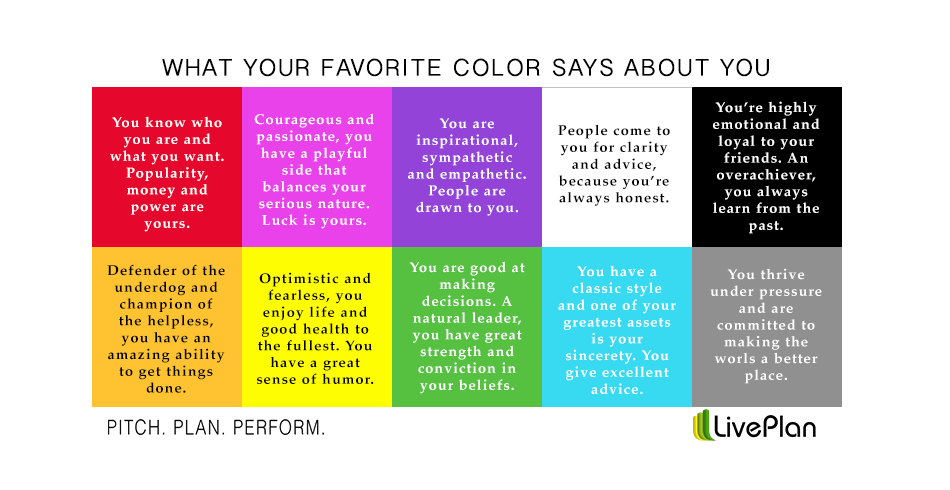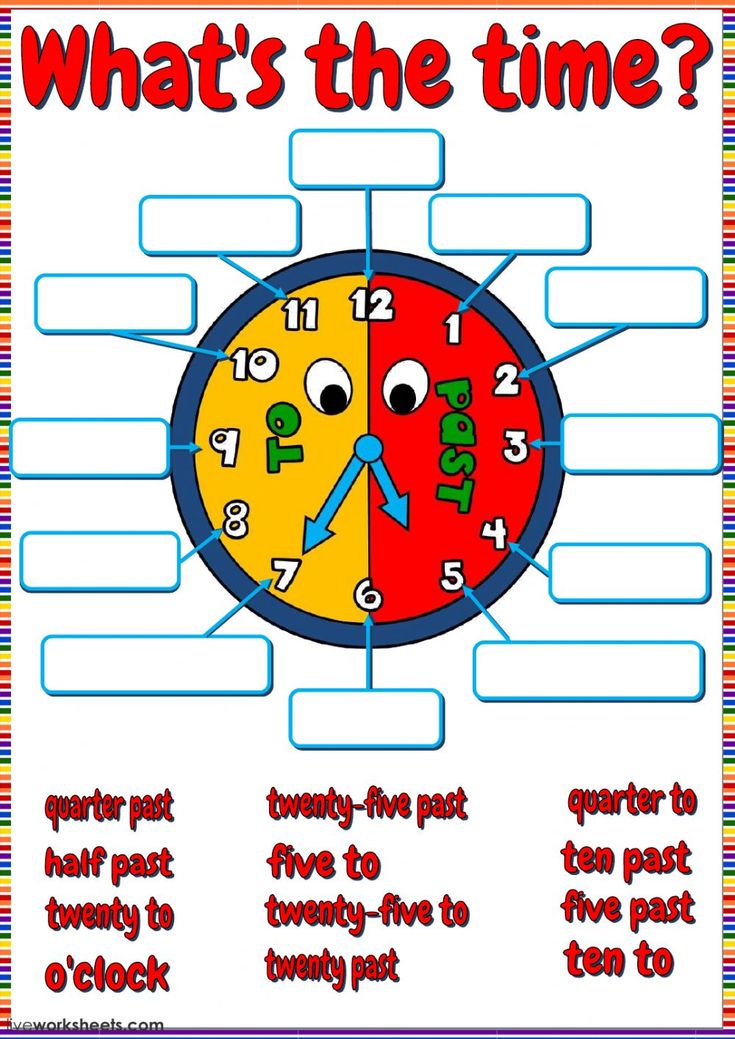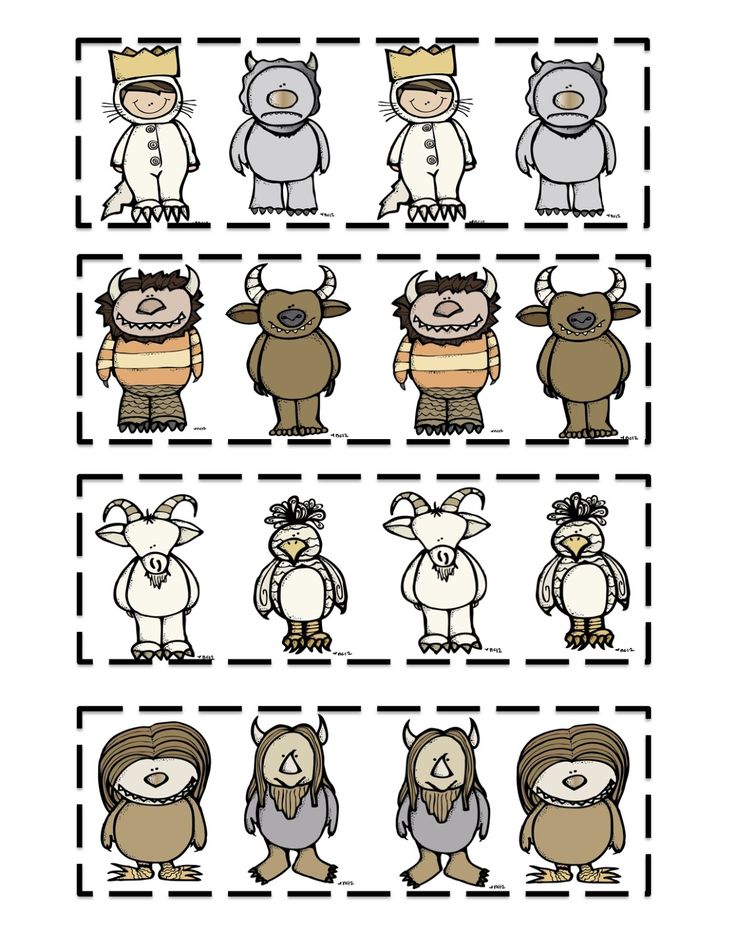Teaching prepositions to kids
A Helpful Guide, Plus Fun Activities
If you’re like most parents, then you’re probably very busy with an endless to-do list. This can make it challenging to help your child with prepositions for kids.
Before you start worrying about your child’s language and vocabulary development, fear not! We are here to help.
Our HOMER experts know a thing or two about helping children understand the parts of speech, and today, we’ll be focusing on prepositions. To be specific, we’ve compiled a detailed guide for you.
Without further ado, let’s get started.
What Are Prepositions?
Prepositions as the linking words in a sentence that help express relationships between other words in that sentence.
Under and inside are prepositions we commonly use in the English language to describe where something is. Besides indicating position, prepositions also help describe when something is happening (
before and after, for instance).
In a sentence, prepositions are meant to be followed by a noun, pronoun, or noun phrase (e.g., the door, an apple, etc.) that acts as an object. For instance: “Put the apple on… ” is not a full idea because the preposition “on” needs an object after it (“Put the apple on the table.”).
We’ve mentioned that most prepositions express time and location. So, let’s have a closer look at that.
Prepositions For Time
Some of the most common prepositions for time are at, on, by, and after.
For example:
- Our class will start at 4 pm.
- We are going to the park on Friday.
- I’ll be home by midday.
- We’ll drive home after the game.
Prepositions For Location
A few prepositions you might regularly use to indicate location are under, on, in, and above.
For example:
- Place your book under the table.
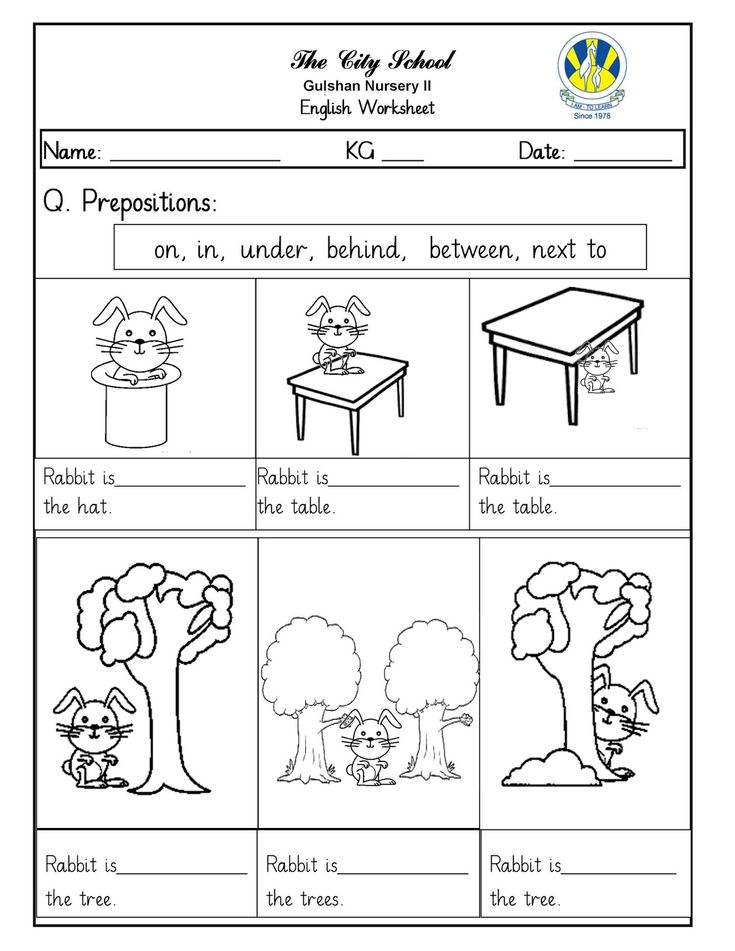
- The dog is sitting on a chair.
- Your crayons are in your bag.
- The plane flies above the clouds.
Sometimes, it can be challenging for children to grasp the concept of prepositions entirely, but with practice and some of the below tips, your child will soon get there!
Before you can incorporate our tips for helping your child with prepositions for kids, they must be at the right age to start learning this concept.
When Do Children Learn About Prepositions?
Babies pick up a lot of their language from their parents, siblings, and caretakers. By 24 months, toddlers commonly use the prepositions “on” and “in.”
In early grades, prepositions are formally introduced. Typically, this would be after third or fourth grade. This is because, unlike verbs or nouns, prepositions are not as easy to understand.
From one of the examples above, we described how “on” can have different meanings. There are also the prepositions “to,” “for,” and “of,” which have various functions in sentences.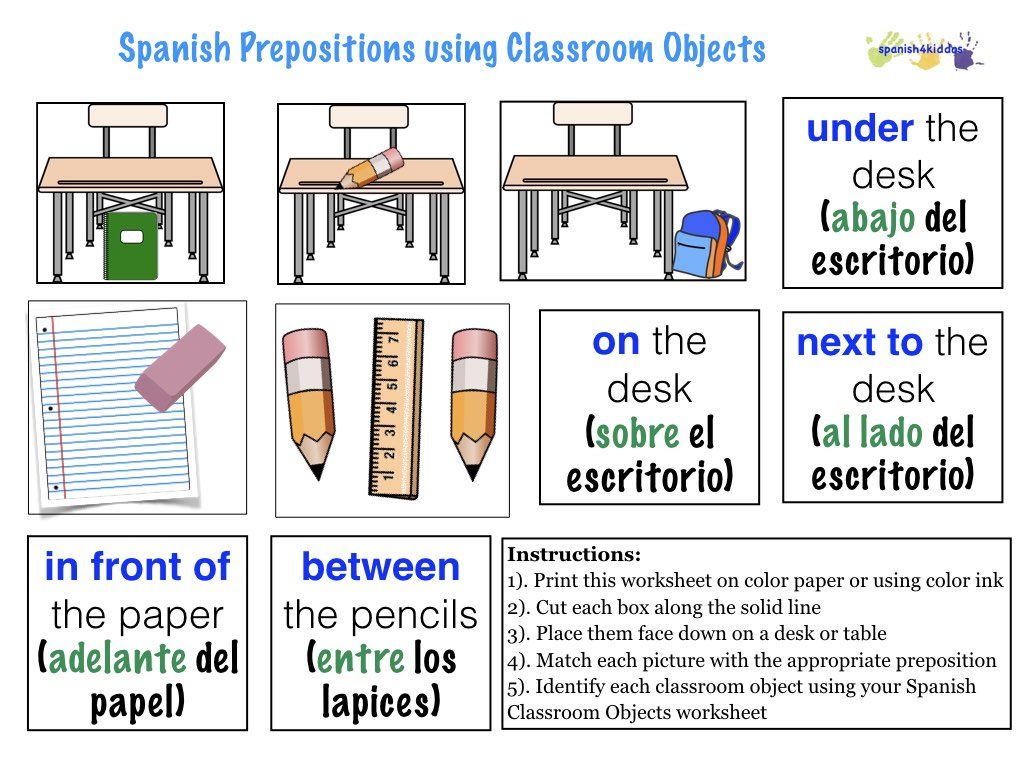 All of this can be challenging for our young learners.
All of this can be challenging for our young learners.
During toddlerhood and early childhood, teaching prepositions for kids is about exposure more than anything. One of the best ways to help children understand prepositions is by encouraging them to carry out instructions that have prepositions in them.
For example, you might say, “Please put this book on the table.” Simple instructions like this are often effective in helping familiarize children with prepositions.
Importance Of Prepositions For Kids
Why are prepositions so important for kids to understand? Why put so much time and effort into helping your child grasp these simple words? Let’s take a look.
Better Communication
One of the biggest benefits of helping your kid know prepositions is that it will help them communicate better.
As already explained, prepositions can be tricky to understand. While these words may be few and pretty short, using them correctly can make a big difference in communication.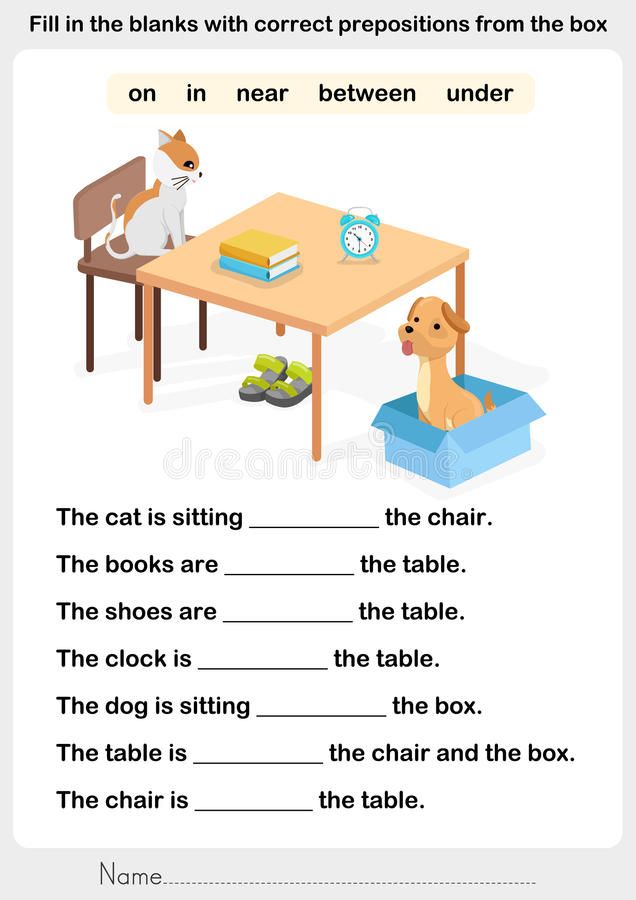
Helping your child with prepositions from a young age can enable them to grasp the concept early, practice them often, and know how to use them correctly as they begin constructing sentences.
Improved Ability To Follow Directions
When your child understands prepositions, it will be easier for them to carry out instructions independently. For example, “Please place your crayons in the box” will not be mistaken for “Please place your crayons behind the box.”
Whether it’s in, on, behind, against, or beneath, your child will be clear on what they need to do and confidently do so.
How To Teach Prepositions For Kids
1) Read About It
Sometimes the best place to start with teaching children prepositions (or anything else) is through books. If your child is like most kids, then they already love listening to you read stories to them, so this is an easy one!
There are tons of books online that you can read to help introduce your child to prepositions and how they work.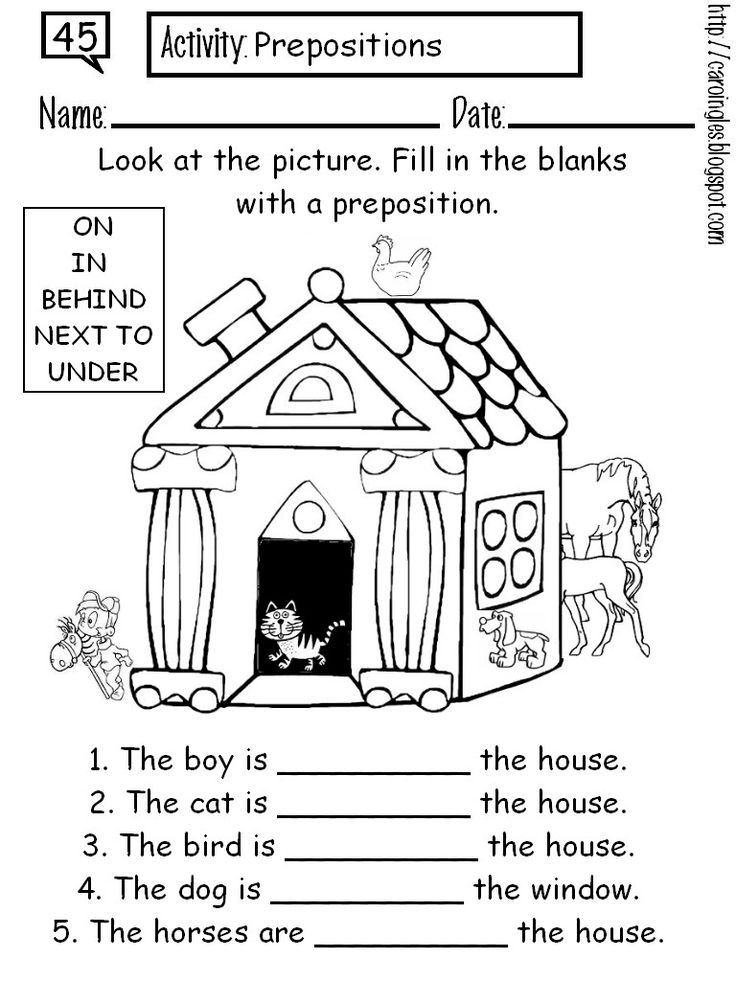 The following are a few great books for kids aged 2-6 years old:
The following are a few great books for kids aged 2-6 years old:
- Where’s Spot?
- Rosie’s Walk
- Up, Down, and Around
- The Berenstain Bears Inside Outside Upside Down
- Hide-and-Seek: A First Book of Position Words
2) Choose The Missing Word
Once your child has a basic understanding of prepositions, it’s time to test their knowledge (but in a fun and easy way!).
Start by writing a simple sentence and leaving out the preposition. Read the sentence to them and give them a few options to see which word works best in the blank spot.
For example, you can write down, “I have dance lessons _ Tuesday,” and then give your child three possible options (in, on, under).
It can be great practice to help your child consider each option before deciding on one. Ask them, “Can I have dance lessons in Tuesday?” or “Can I have dance lessons under Tuesday?”
This questioning and taking the time to think about every option can help your child understand why “on” is the correct answer.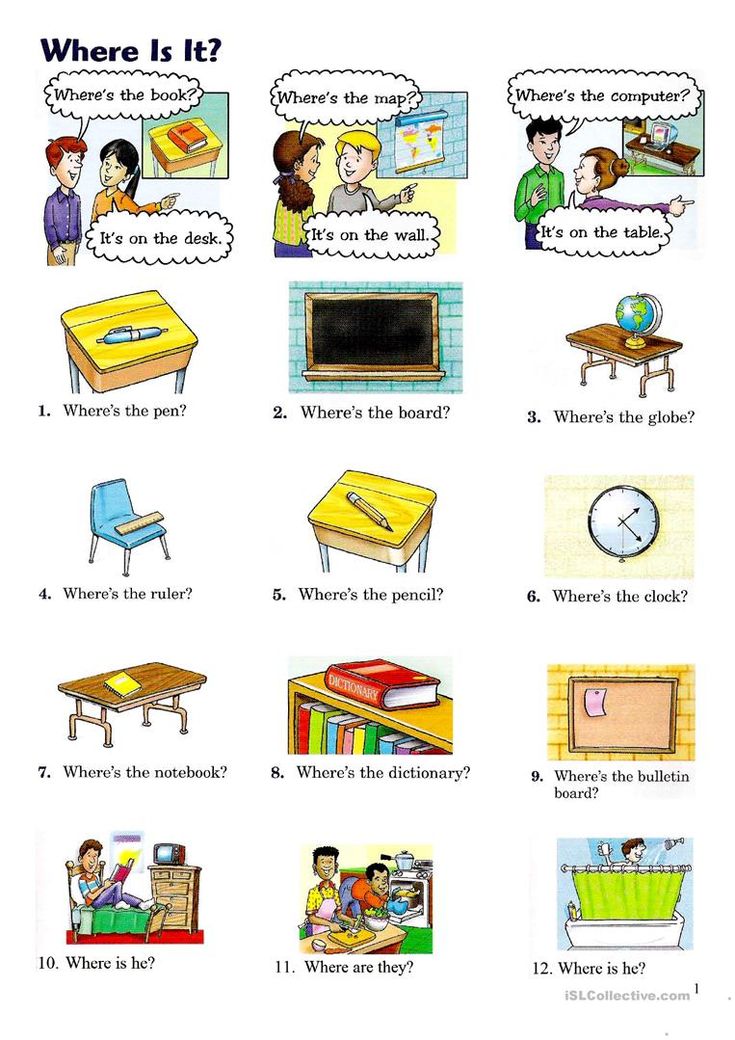 It can also make the game silly and fun (“We can’t sit under the floor!”)
It can also make the game silly and fun (“We can’t sit under the floor!”)
3) Fix The Strange Sentence
This fun activity works similarly to the previous one, except this time, you’ll write and read a sentence with an incorrect preposition, and then ask them to fix it.
Using the example above (“I have dance lessons in Tuesday”), what sounds funny about this sentence? In this example, your child will need to recognize that “in” is the problem and suggest what word should be used instead.
4) Expand A Sentence
Earlier, we mentioned that prepositions are the linking words that express position, time, and other functions in sentences.
A great way to help your child understand this is by helping them use prepositions with simple sentences.
To get started, you can say an incomplete sentence, and then encourage your child to complete it. For example, you can begin with, “There is some juice…” Your child will then complete this with “…in the fridge.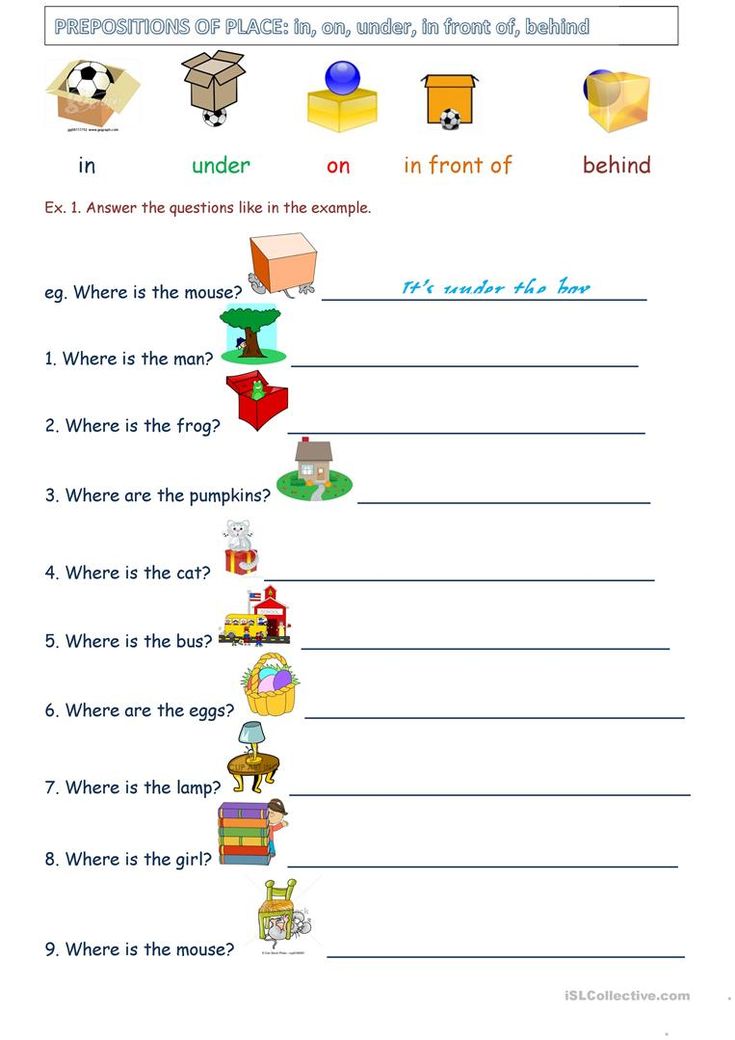 ”
”
If they are still new to prepositions, kids will probably make a few mistakes. That’s OK! This is the perfect opportunity to help them learn and grow their vocabulary!
5) Musical Chairs With A Twist
Everyone enjoys playing musical chairs, so we thought it would be a great way to help kids learn about prepositions — with a bit of a twist, of course! All you need for this activity is some fun music, a chair, and an energetic child.
To begin, play the music and allow your child to walk clockwise around the chair (just like the traditional musical chairs).
The major difference is when you stop the music suddenly, your child will need to act out what you say. For example, sit behind the chair, under it, beside it, etc. You can even add to the fun with other instructions, like tapping on the chair or waving to the chair.
6) Sing-Along
You’ve probably heard your child singing along to their favorite songs before (they might even request them on the drive home).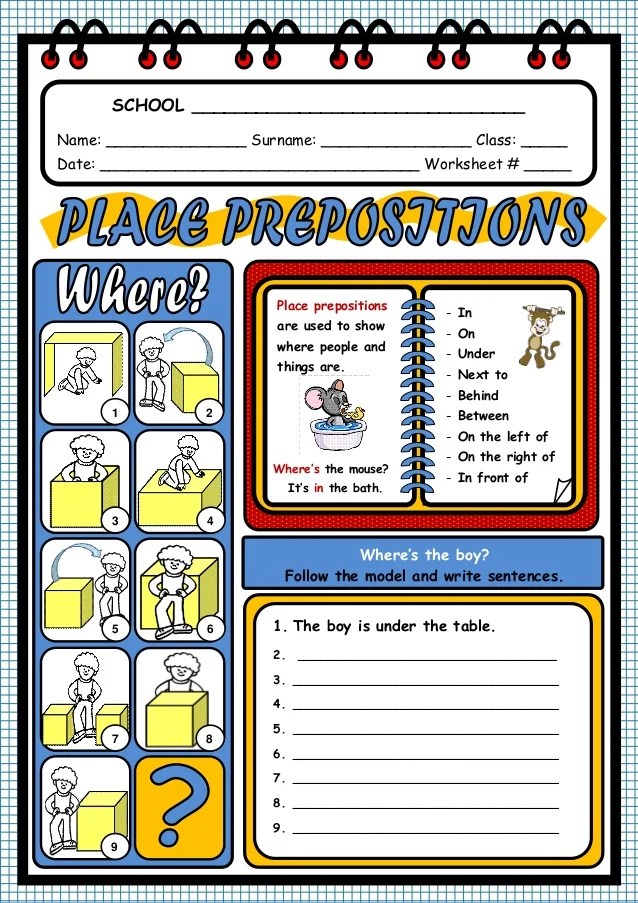
If your child loves singing, why not use this to help them understand prepositions? All you need is a catchy tune (think of a song your child will already be familiar with, like “Row, Row, Row Your Boat”) and some instructions to go along with the song.
With a silly song, simple sentences, like, “Sit on the couch,” “Sit behind the couch,” etc., become much more fun and exciting for your child to engage with while learning.
7) Place The Toy…
Sometimes the best way to help your child understand prepositions is by physically placing a toy in different places.
To help your child get excited about this activity, use their favorite teddy bear or toy and then give them instructions on where to place it. For example, you might say, “Place your toy on/under/behind the bed.”
We love this game because it focuses on the movement of one object and may make it easier for children to grasp what the words on, under, and behind actually mean.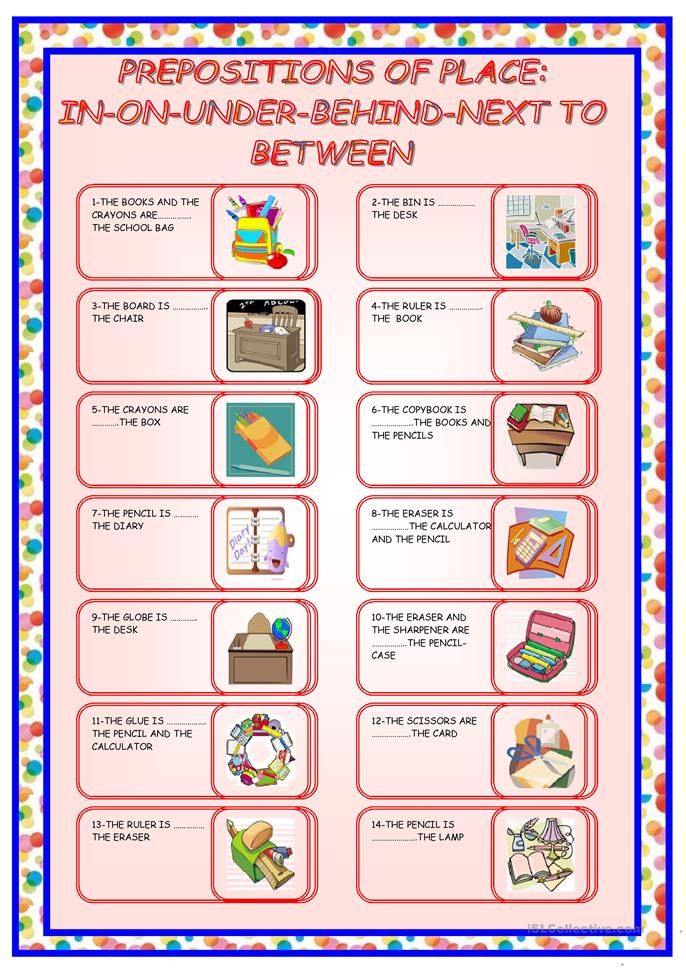
Even better, you can turn this into a fun game by seeing how quickly your child can move their toy around to different spots in the house!
Fun With Prepositions For Kids
From our list above, we hope you’re clear on one thing: There are many ways to introduce prepositions for kids while making sure that they see them in a fun and engaging way.
Whether you choose to use some or all of the above-mentioned tips, remember to exercise patience with your child as they try to wrap their heads around prepositions and the rules that come with them.
With plenty of exposure during your daily life, you’ll soon find your child mastering these often complicated concepts.
Check out HOMER’s Learn & Grow app for more on how to help children thrive through their early years!
Author
TEACHING PREPOSITIONS | you clever monkey
Classroom ideas and resources including perfect picture books and ready to print drawing prompts for teaching prepositions in the Early Years.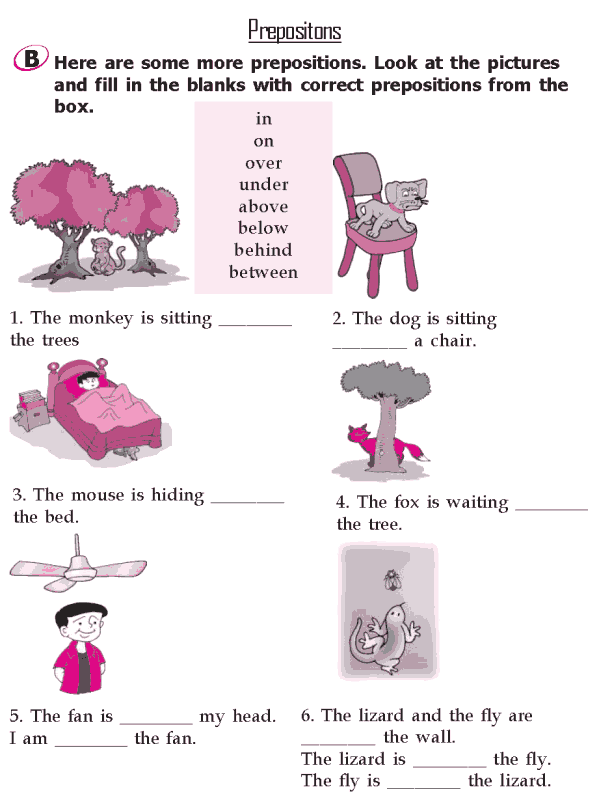
Teaching prepositions to young children can be so much fun and is important work in early childhood.
Why?
Prepositions are words that tell us where something is. Children need to understand these words so they can carry out instructions independently but prepositions can be a difficult concept for a child to learn.
Really?
Think for a moment about how we use prepositions to describe the location of something but how this can vary from person to person. While we ride 'on' a bike and 'in' a car, do we fly 'in' or 'on' a plane somewhere?
This post contains affiliate links.
With children who are having difficulty with this important language concept, speech pathologists will often target teaching these functional words as a priority when setting individual language goals. The importance of this part of speech is also reflected in the Australian Curriculum for schools in the Foundation Content descriptions in both Maths and English.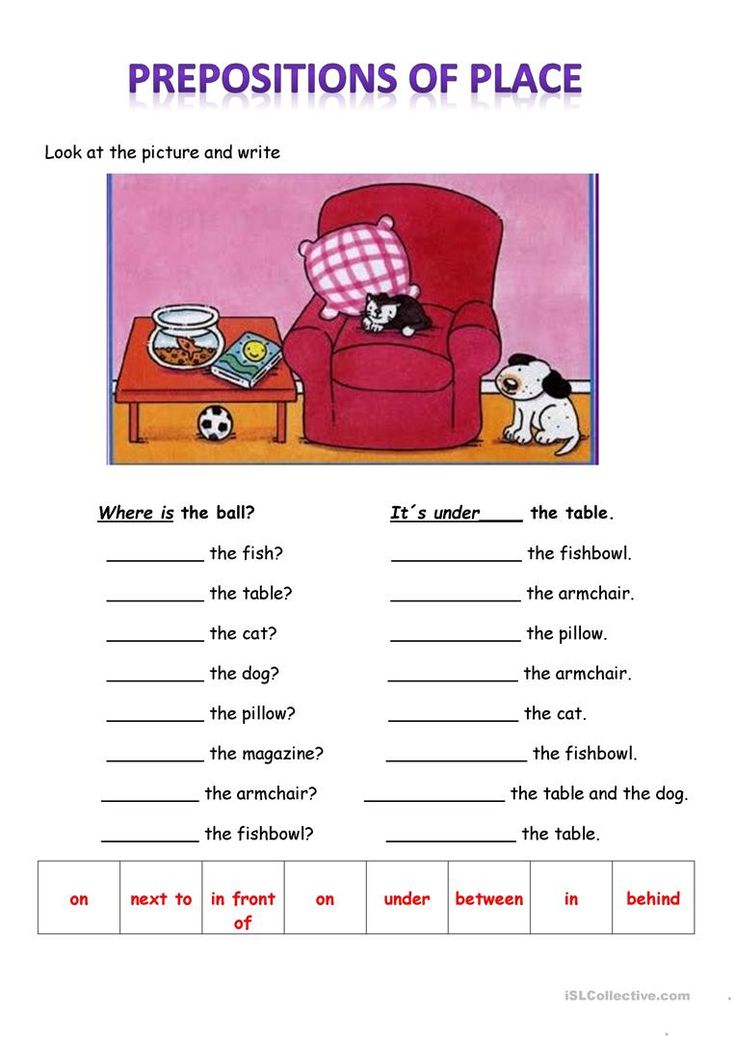
TEACHING IDEAS
The simplest place is to use hands on play to start with. In my first lesson, I use an object to teach location.
In class, I used a toy frog along with a chair, a hoop and a pillow. During our large group time, I asked individual students to place the frog in different locations.
Can you put the frog 'on' the pillow, 'under' the chair, 'in' the hoop, 'in' my hand?
Many prepositions can look different to the learner depending on their location to the speaker of such instructions so after modelling the language we might use, head out to the playground and have your students complete an obstacle course with you directing their movement.
As a followup activity, in a safe and level place blindfold one student then have another student direct them between points from start to finish. They can clearly see then how they must use the correct language if they're going to get their friend moving the right way.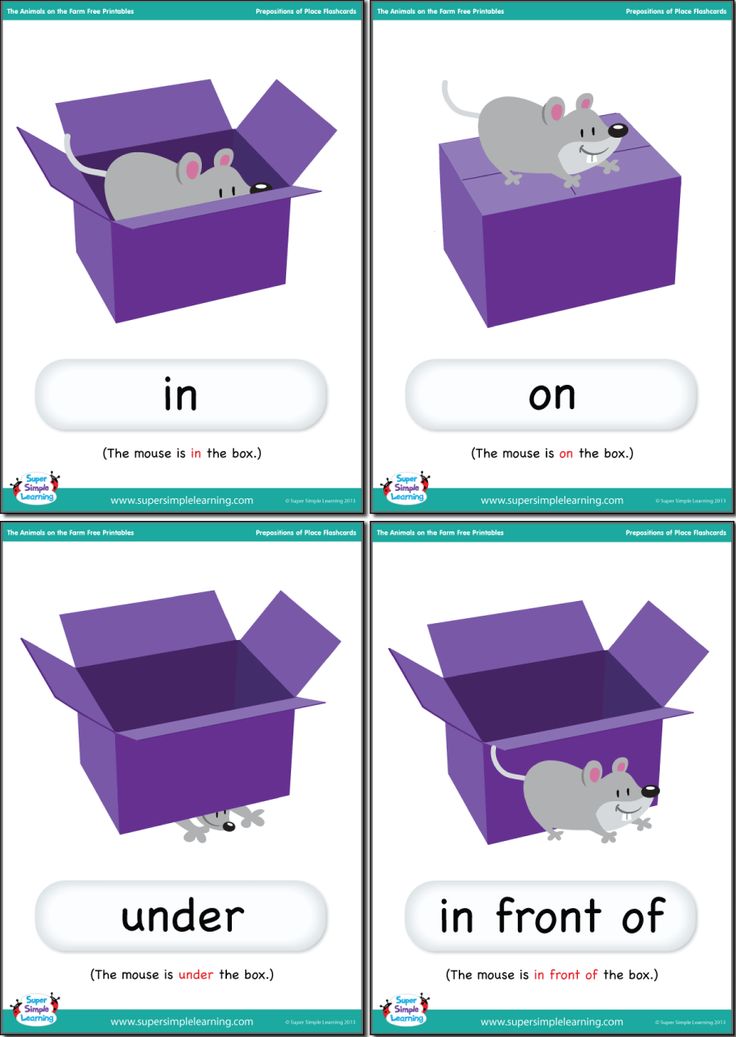
Back in class I also use these mini posters and the matching Powerpoint presentation to have children find the correct preposition from a list of words.
In another lesson we then completed this directed drawing 'At the Beach'. I gave a single instruction at a time for the students to follow.
'Can you draw a seagull 'on' the umbrella?
Can you draw a girl 'in' the water?
Can you draw a chair 'under' the umbrella?
Can you draw a seagull 'up in' the sky?
Can you draw a sandcastle 'next' to the chair?
Can you draw a towel 'on' the sand?
Can you draw a ball 'next to' the girl?'
In the next lesson we reviewed our word wall then I paired up the students to complete another directed drawing but this time they needed to take it in turns to give the instructions.
TEACHING RESOURCES
Looking for some great picture books to support your teaching of prepositions? We have plenty of suggestions. Take a look here, here and here.
Take a look here, here and here.
You can also grab our ready to print Teaching Prepositions bundle of four different drawing prompt templates.
The 15 page bundle includes our At The Beach template complete with 10-15 written prompts each ready to print out and display next to your student's artwork or use as inspiration to create your own prompts. Also includes At The Playground, In My Bedroom and At The Park prompts as well.
ALSO AVAILABLE FROM OUR TpT STORE
OR GRAB OUR
PREPOSITION POSTER + POWERPOINT BUNDLE!
This set includes -
- 8 different preposition posters
- interactive Powerpoint Quiz suitable for the whole class, plus
- independent review sheet.
Use in class to reinforce prepositions.
ALSO AVAILABLE FROM OUR TpT STORE
This is a digital product, no physical item will be posted to you.
Consultation "How to teach children of early and preschool age to use prepositions" | Presentation on the development of speech on the topic:
Consultation
"How to teach children of early and preschool age to use prepositions"
1 slide
2 slide According to research, prepositions appear in children's speech later than other parts of speech.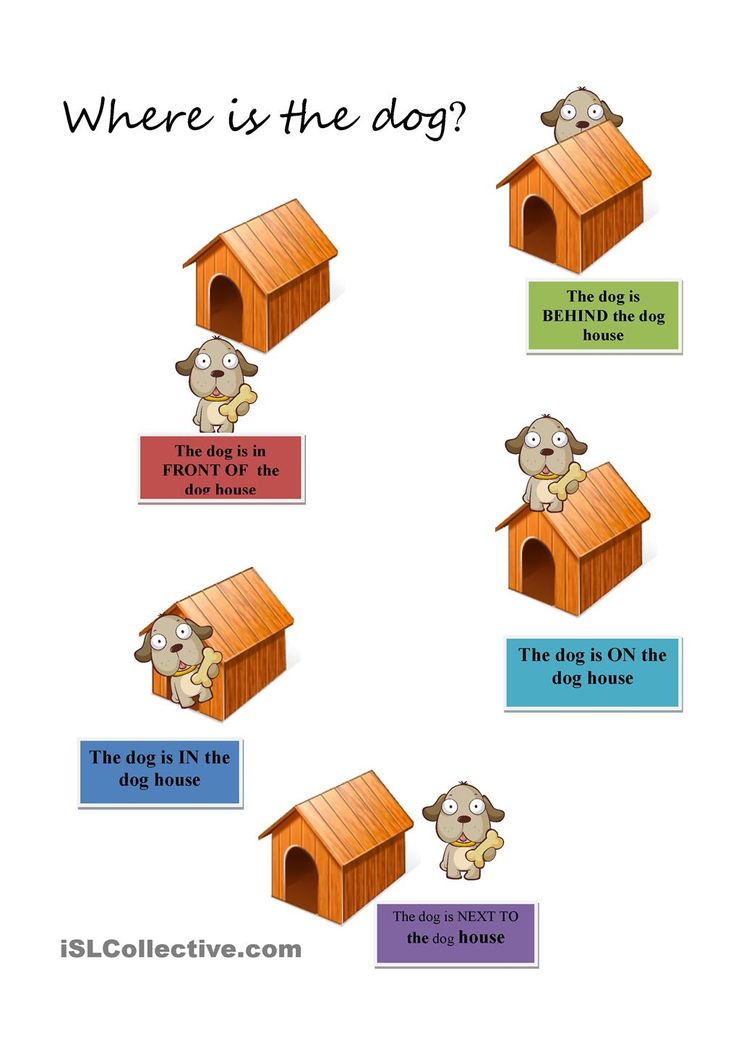 First, children begin to use nouns, adjectives and verbs in their speech, then - pronouns, adverbs, numerals. And only after them - suggestions.
First, children begin to use nouns, adjectives and verbs in their speech, then - pronouns, adverbs, numerals. And only after them - suggestions.
The first prepositions appear in children in the third year of life - at the age of 2 years 3 months - 2 years 6 months (A.N. Gvozdev).
3 slide In the fifth year of life (given by G.M. Lyamina), children most actively use the prepositions “y”, “in”, “on”, “with” in everyday life. At this age, prepositions are rarely used that indicate the exact location of an object (“above”, “between”, “through”, “before”). And children of the fifth year of life practically do not use the prepositions “under”, “before”, “about”, “about” in everyday communication. In everyday life, children prefer to use the words “there”, “here” (adverbs of place) instead of prepositions.
4 slide At the age of 5-7 years, the child already uses a large number of various prepositions, using them correctly in his speech: on, in, for, under, to, from, by, about, from, from, over, because of , from under, through, between.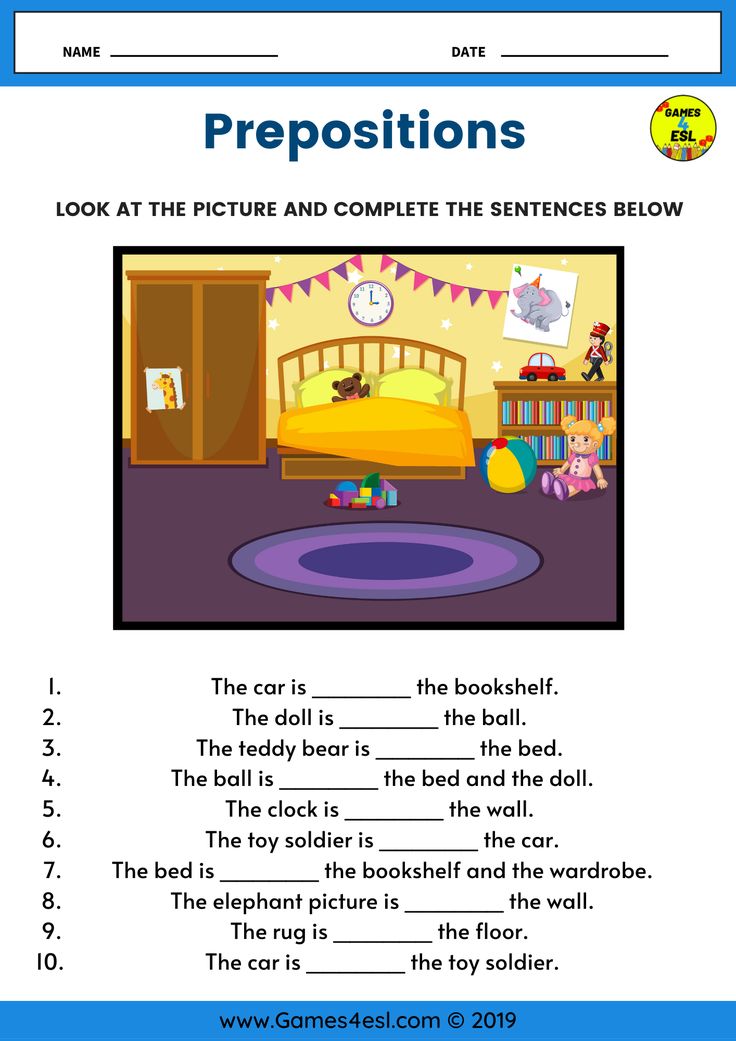 Children know that a preposition is a separate word. And they can count how many words are in a sentence with a preposition and lay out the sentence scheme with chopsticks. One stick is one word. For example, in the sentence "We are going to the forest" - 4 words. Accordingly, the scheme of this sentence will look like a row of 4 sticks, and children at 6 years old already understand that “in” is a separate word in the sentence.
Children know that a preposition is a separate word. And they can count how many words are in a sentence with a preposition and lay out the sentence scheme with chopsticks. One stick is one word. For example, in the sentence "We are going to the forest" - 4 words. Accordingly, the scheme of this sentence will look like a row of 4 sticks, and children at 6 years old already understand that “in” is a separate word in the sentence.
5 slide Mastering prepositions is not as easy for children as it might seem. Toddlers often skip prepositions in their speech or confuse them, making speech errors. In entertaining speech games and game speech exercises, you can help kids master prepositions and learn how to use them accurately and correctly, without errors, in their speech.
6 slide Games with prepositions for children.
Before starting speech games with prepositions, find out which prepositions your child is already using and whether he uses them correctly.
Working on prepositions with children of early and middle age
One of my favorite games is hide and seek.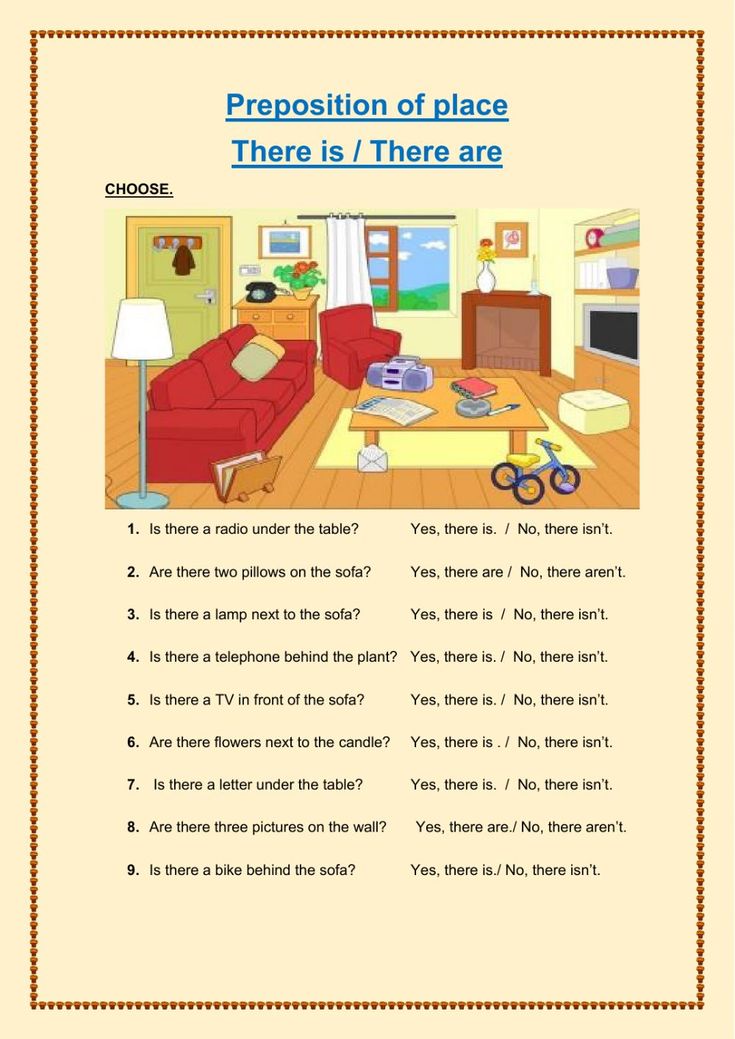 This fun entertaining game known to all of us since childhood will help teach preschoolers to correctly use spatial prepositions IN, ON, UNDER, ABOUT in speech.
This fun entertaining game known to all of us since childhood will help teach preschoolers to correctly use spatial prepositions IN, ON, UNDER, ABOUT in speech.
"Hide and Seek"
In this game, the baby still hears spatial prepositions in speech, on behalf of different characters, but does not say them. Passive vocabulary is being accumulated. The speech game must be repeated on other days at the request of the baby, but be sure to change its plot each time.
If you are playing with a toy - a cat, then use a poem - a counting rhyme by N. Pikuleva:
I hear, I hear, I hear, I hear,
Who stomped and where!
The cat jumped on the roof
And disappeared without a trace!
One-two-three, four, five,
I'm going to look for her!
If the child is 4-6 years old, then offer him to hide several toys from you in different places (in a box, by the box, behind the box, under the box, on the box, etc.) and try to guess where everything is. Then turn around and, together with the baby, describe the correct location of the items: “Duck in the box. Hippo - behind the box. The machine is in front of the box. The dog is on the box. The snake is under the box. In this game you will be able to understand how accurately, correctly, freely your baby uses prepositions and what he needs your help in.
Hippo - behind the box. The machine is in front of the box. The dog is on the box. The snake is under the box. In this game you will be able to understand how accurately, correctly, freely your baby uses prepositions and what he needs your help in.
If a child misuses prepositions, then you need to help him with a series of exciting speech games that will help clarify and reinforce the meanings of different prepositions. Choose games from the list below according to the problems that your child has (which pretexts he has not mastered).
Live pictures.
One of the children's favorite exercises with prepositions is "live pictures". The game can be played in two versions:
A) Children (child) act out scenes - pantomime, depicting actions etc.) Then they change roles in the game. You can play both individual actions and holistic plots.
B) Picture - an illustration of a story or a poem is laid out by a child on a magnetic board, flannel graph or carpet graph.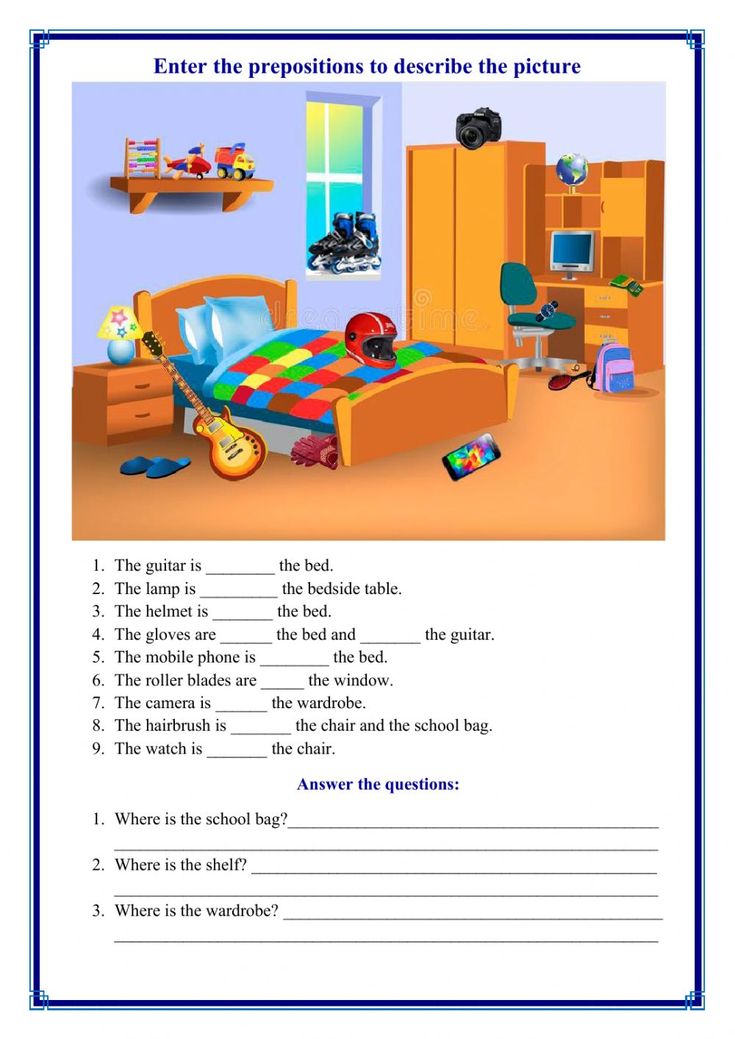 You can stage situations on the table with the help of real objects under the lines of poetry or fables. The child uploads images - "live pictures" in accordance with the text of the poem or story.
You can stage situations on the table with the help of real objects under the lines of poetry or fables. The child uploads images - "live pictures" in accordance with the text of the poem or story.
Poems with prepositions for children 3-4 years old
“What you took, put it back!” Z. Alexandrova.
Read the poem by Z. Alexandrova and invite the child to act it out with the help of real objects and toys - doll shoes and a bed, a real mug, buffet, pillow. In accordance with the text of the poem, the baby will need to place objects.
You can also play the game in such a way that the tasks from the poem are performed by the doll Olya, and then the kid corrects her mistakes and helps the doll cope with the tasks of the mother.
“Olenka knows this:
What you took, put it back!
Only the girl is small:
She forgets where she got it.
Puts a mug on the bed,
Puts a pillow on the floor,
Hides the shoes in the cupboard.
Is everything in place or not?
If mother kept silent,
We must do everything all over again:
Carry a pillow to the sideboard,
Put a mug on the parquet floor,
Put the boots into the bed…
Seems not like that again?
Olya looks guiltily:
No, everything was not there.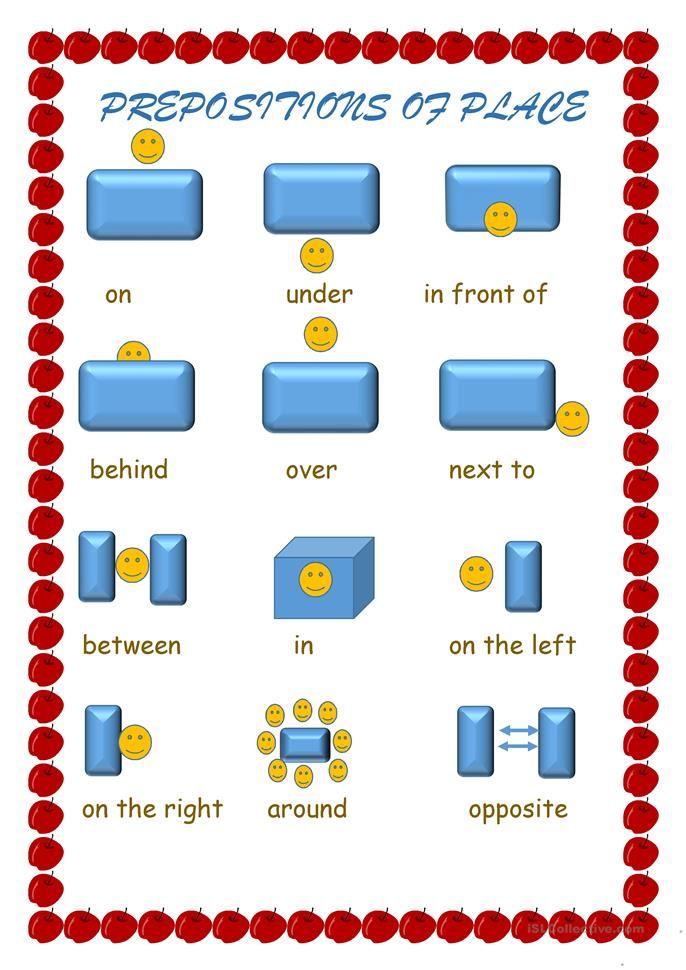 ..
..
Help her guys,
Put everything in its place. (Z. Aleksandrova)"
Game - confusion with prepositions for children 3-5 years old
"Pie" A. Valasina
This poem is a confusion, a fun game with words. Try to play this fun and useful game for the development of your child's speech!
To play you will need toys (pictures or objects): a cat, a basket, a picture.
Once I was waiting for guests - many adults and children.
I baked a delicious apple pie very skillfully.
Wiped the dust and washed the floor. And watered flowers everywhere.
So I looked around, suddenly lines were composed:
“There is a picture hanging on the wall, and under it there is a basket.
The cat is sleeping in that basket. A ball lies next to her.
So the rhyme turned out, everything turned out very smoothly.
In order not to forget the lines, I decided to repeat them:
“There is a painting by the wall, and a basket is sleeping under it.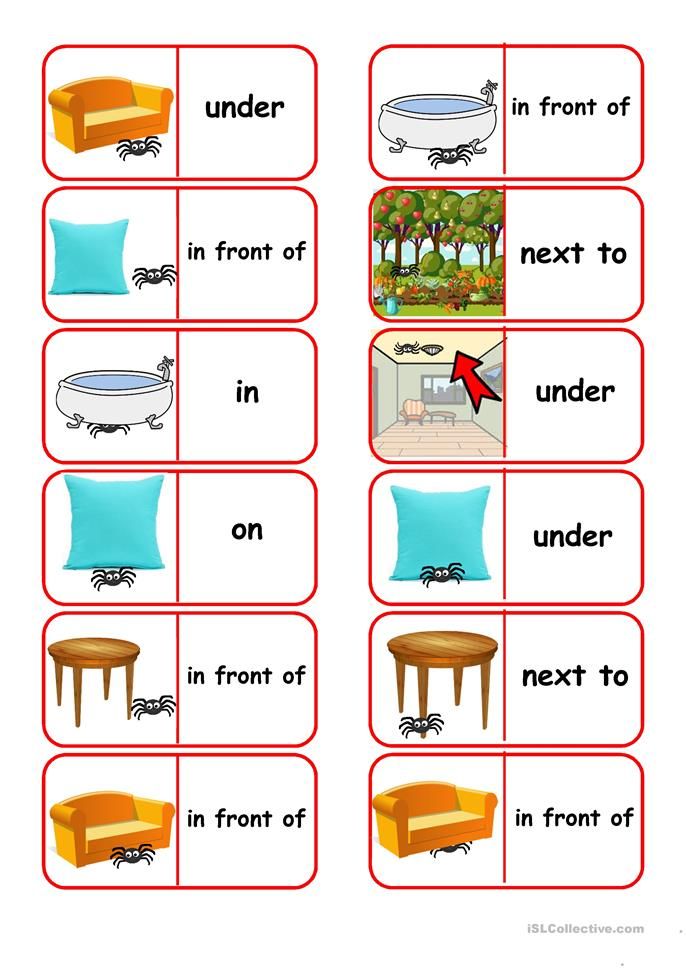
A ball is hanging on the wall, a cat is lying on a ball.
Oh, the words got lost and the verses didn't work out!
Well, I'll have to repeat these lines again:
“There is a basket hanging on the wall, and in that basket there is a picture.
The cat is sleeping by the basket, and under it lies a ball.
I got something mixed up. Help me friends!
Together we will repeat these lines again:
“Hanging on the wall ... (picture). And under it stands ... (basket).
The cat is sleeping in that basket. Next to her ... (a tangle lies) ".
Now the order is complete! A huge pie awaits all of us!
Look at the pictures and find confusions - fables. Name with the child where the objects are and where they should be drawn.
Hen and Chicks
To play you will need toys or pictures: a hen and chickens. A similar game can be played with other toys - for example, a goat and kids, a cat and kittens, a duck and ducklings, a sheep and lambs (depending on what you have at home).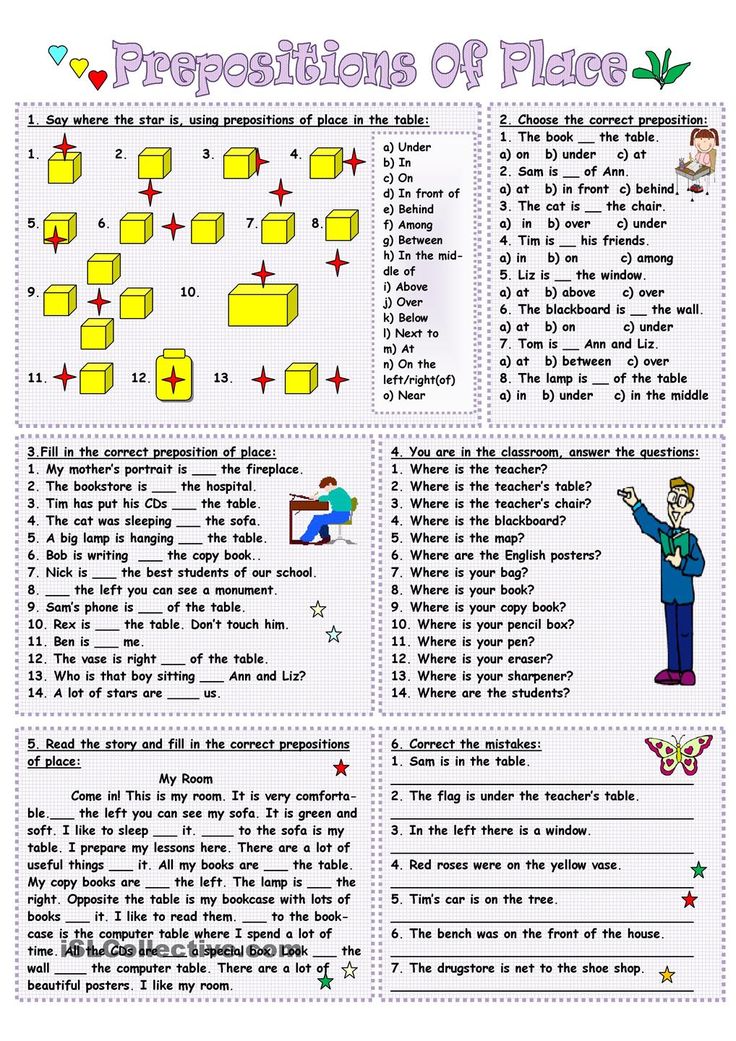
Read a rhyme to your child (or sing a song):
A hen went out for a walk
Pinch some fresh grass,
And after her the guys -
Yellow chickens!
Ko-ko-ko, ko-ko-ko,
Do not go far,
Row with your paws,
Look for grains!
Ate a fat beetle,
Earthworm,
Drank some water
Full trough!
Tell the story further. The chickens did not listen to the chicken, they fled in all directions!
Invite the child to close their eyes while you hide the chicken figurines. For this, use the pictures and objects that you have at home (you can hide behind a book, behind a toy tree, under a doll bench, on a car, etc.).
Let's help the hen collect her babies. Where did they hide? (ask the baby to find the chickens and name where they are): “Where are the chickens hiding? That's right, here's one - ON the porch. And second? Yes, behind the porch. Where is the third chicken? Under the house. On the pond Under a bush.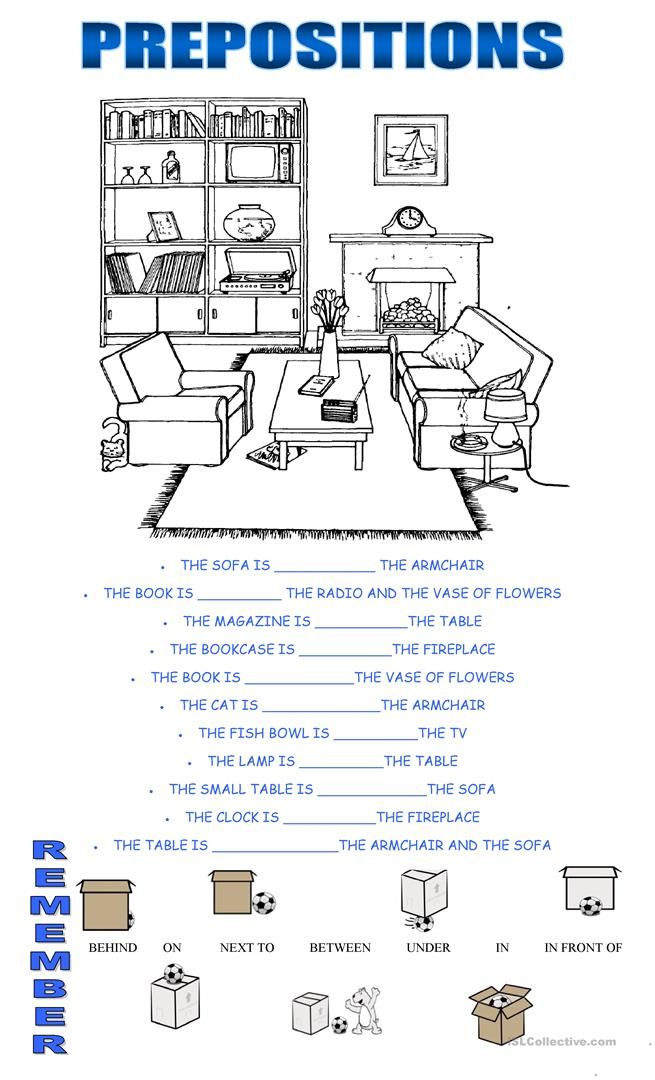 Where did the chick come from to its mother hen? From under the house. Where is this one from? Because of the bush. Where is this chicken hiding? On the grass by the pond, etc.”
Where did the chick come from to its mother hen? From under the house. Where is this one from? Because of the bush. Where is this chicken hiding? On the grass by the pond, etc.”
Speech game with the preposition "for".
Guess who hid behind the house?
Another poem that is great for reinforcing the correct use of the preposition "for" in children's speech - they hid behind the house (behind a bush, behind a car, behind a fence, and other options).
Now we are playing hide and seek,
And the game is full of riddles.
I can't find Sasha,
Nastya, Dima and Natasha.
There is no one behind the bush,
Behind the porch and behind the pillar.
I'm a little offended,
That I can't see my friends at all.
Where are the guys to look now?
I'll go around the whole yard again.
Whose legs are behind the car?
Nastya and Dima sat down there.
Where to look for Sasha with Natasha?
Here they are, in our entrance.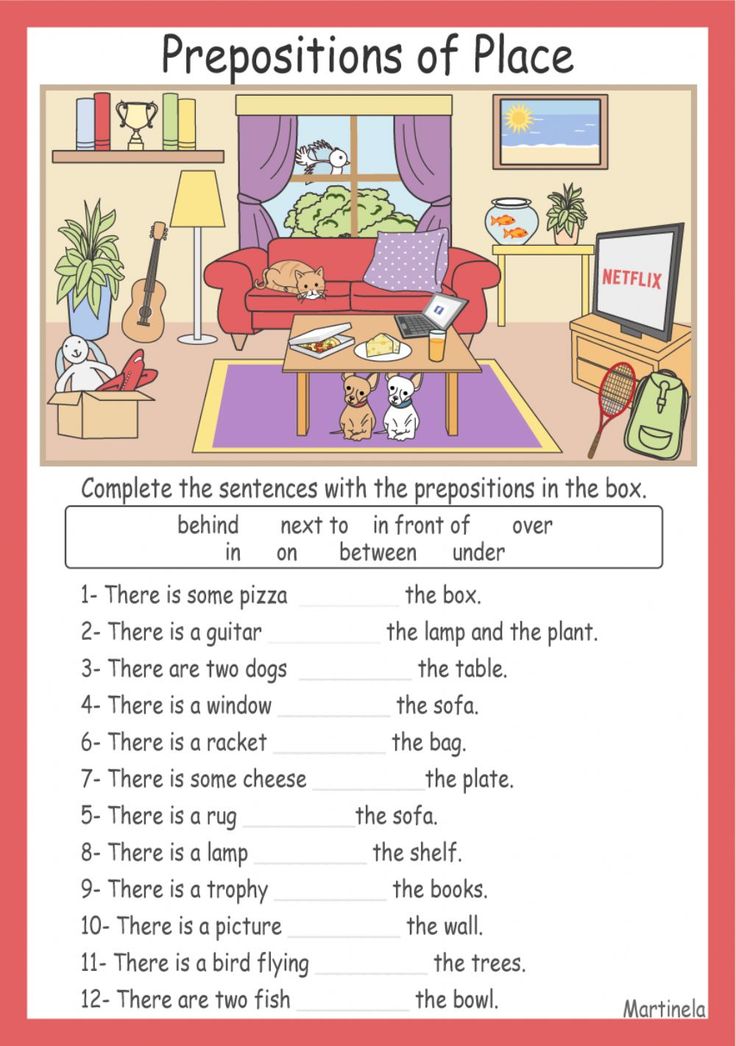
I won't even tell you,
Where will I hide after myself. (V. Puzyrev)
After reading the poem, play with the children the game “Guess who hid behind the house” (behind a tree, behind a bush, etc.). Similarly, you can play the game “Guess who hid behind a bush, (behind a fence, behind a tree)”
7 slide Teaching older preschool children
First you need to give the children the concept of PREPOSITION as a “little word” and its meaning in a sentence , i.e. without a certain pretext, it is impossible to understand the meaning of the sentence and perform certain actions.
For example, children are asked to perform the following actions: put down a pencil… a book; put the ball down.... chair; They cannot complete this task until the preposition is called.
Learn to understand the scheme cards: (on, in, under, on, etc.)
First, teach children to make simple sentences based on the action of objects and phenomena, then sentences using prepositions.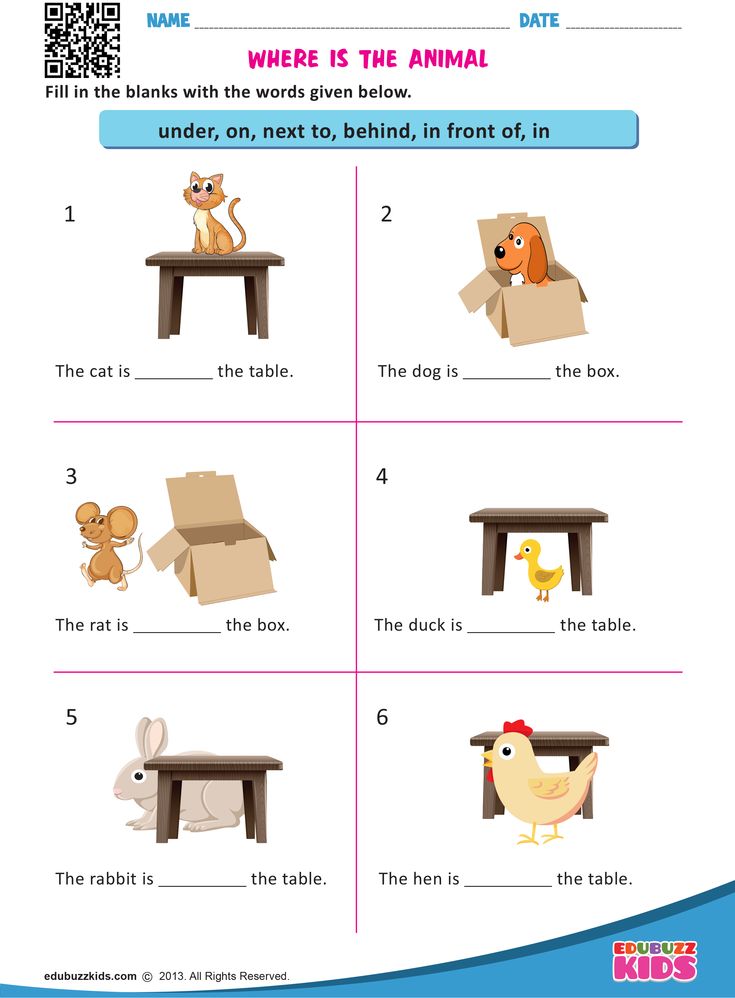
Next, they suggest making sentences based on a picture with one character (A dog is sitting in a booth, a vase is on a table, etc.)
Poems with prepositions for children 5-7 years old
"Prepositions" M. Yasnov
This humorous poem is best staged with a group of children. But if you are working with one kid, then you can use pictures and place them on the board or on a piece of paper in accordance with the text of the poem. Or play a scene with toys on the table.
A passer-by was sitting on a bench,
He was holding a bag in his hands.
A starling was sitting above the bench,
A bulldog was lying below.
And the one in the grass, sitting under,
And the one above, in the foliage,
They looked at the one who is on —
Or rather, what is in.
Then a passer-by took a bag
And took out a pie.
I threw a part over, I threw a part under,
And the rest - in my mouth.
And everyone began to chew,
Rather, one - to peck.
For this he had to fly
and jump off.
So warm, soft pie
Was eaten from and to,
A crumpled little bag
Got into a coat pocket.
And one flew over,
Another climbed out from under
And next to the third one ran
For, in front — And forward! (Mikhail Yasnov)
“A chamomile grows by the bush”
We develop word-creation and compose fables - poems with prepositions together with children.
Ideas for this preposition game:
Cut out simple silhouettes from paper - chamomile, bug, bush, bird, shirt, river, bridge.
Use substitute objects that develop the imagination of toddlers. And lay out the picture in accordance with the text of the poem.
Chamomile grows by the bush.
An insect sits under a bush.
A bird is flying over the bush.
A shirt is hanging from a bush.
Why? Yes, because!
Because behind the bush -
Near the river, behind the bridge -
Wet fisherman is drying,
No shirt, no pants.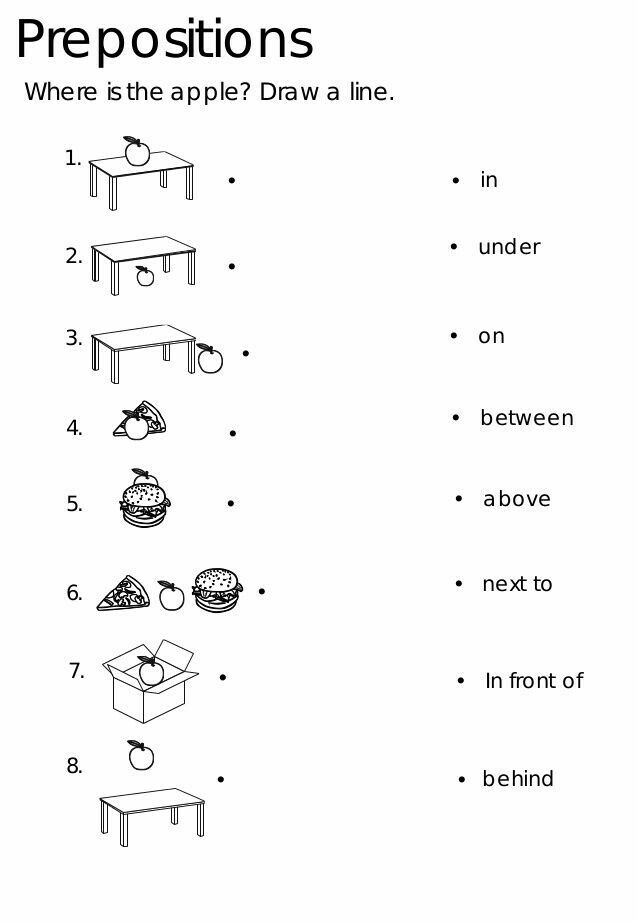
I forgot my fishing rod at home
And I used to catch fish with my hands.
So carried away that he stumbled,
Sitting by the river in anguish,
Drying, freezing and sad.
Then play fairy tales - come up with unusual lines with prepositions that the baby will stage - lay out from pictures in accordance with the meaning of the preposition.
“Kittens”
You will need: pictures of “kittens” (5 pieces) or toy kittens (5 pieces)
Invite the child to come up with new places in the room where he would hide the kittens and name (behind the closet, between the table and the chair , under the sofa, etc.)
Then play hide-and-seek with your child. Let the child hide the kittens, and you will guess and name where they are. Then switch roles. A mandatory rule in the game is to name the place where the kitten is located in words. Only in this case it is considered that the kitten is found and you can switch roles.
Once, some kittens
Decided to play hide-and-seek:
The first one jumped into the boot -
Little Snowball the cat.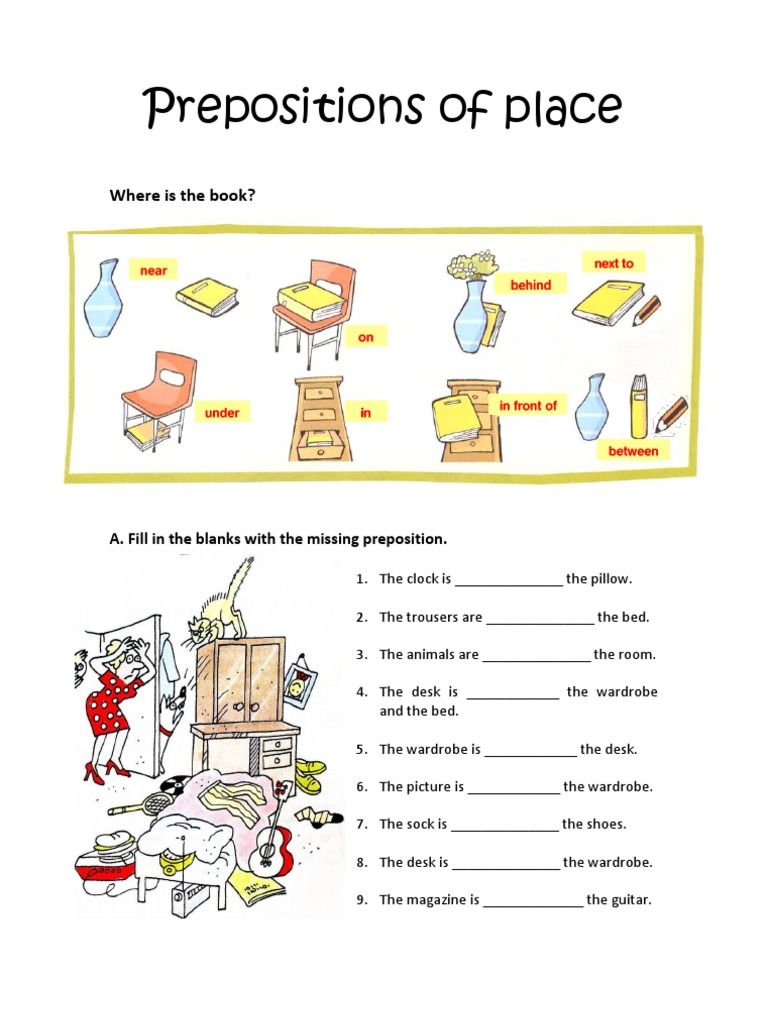
Murzik hid in a basket,
A under Vasilinka's table.
With a blue bow Matryoshka
Hidden by the window.
Well, the smartest Grishka
Climbed into the closet, little rascal!
That's how little kittens
Decided to play hide and seek.
They were looking for them for a very long time,
Only where they were, they did not know,
Only later, to the milk bowl
Pussies quickly came running.
One, two, three, four, five -
Here we are again! (E. Goreva)
"Hide and Seek in the Forest"
This poem is very well suited for dramatization with a group of older preschool children or for acting out in a toy theater or a picture theater. It contains the prepositions "in", "for", "on", "before", "under". After the dramatization, you can come up with new places where the forest dwellers could hide and name them (in a den, in a hollow, under a stump, on a branch, etc.)
I'll tell you guys,
How the animals played hide and seek.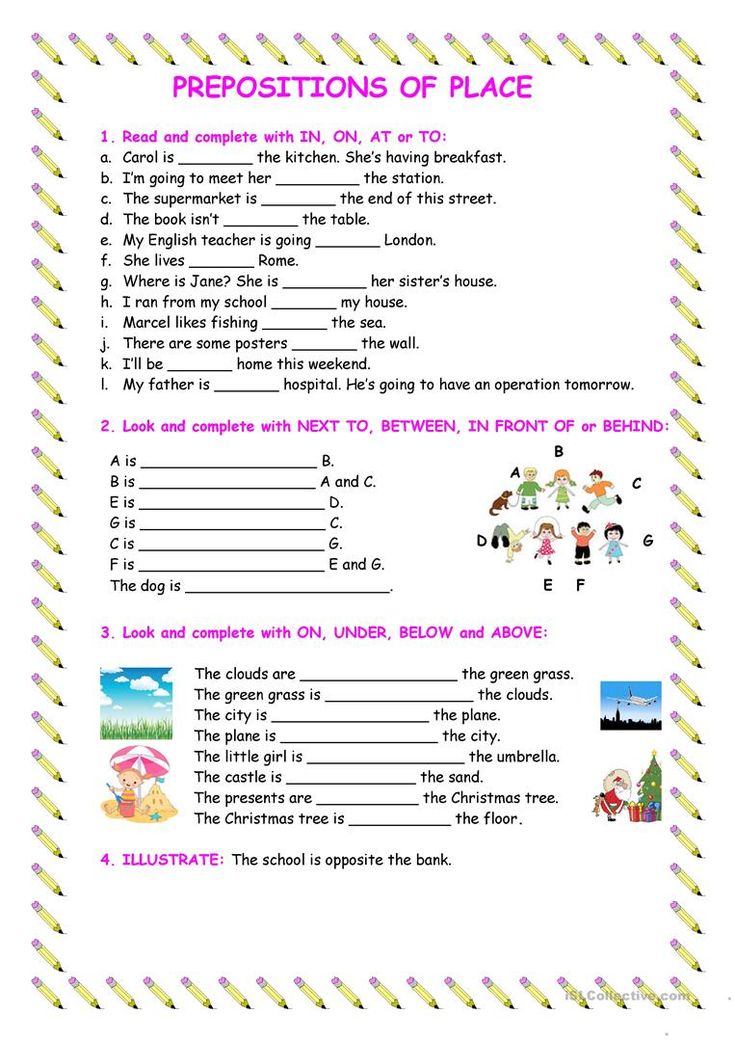
They gathered in the forest.
Who hid behind the bumps,
Who climbed a tree,
Who went deeper into the forest,
And the green crocodile -
He drove.
The son jumped to the kangaroo,
He ran and jumped into the bag!
Clubfoot bear
Hid behind dad.
And the beavers, as always,
They ran to the pond
And there!
Here's an accelerating giraffe
I'm not happy with my height.
Where can he hide
With a height of five thirty.
Changed his mind about playing:
“I'd rather watch.
I'm so tall
It's easy to see everything.
Prickly hedgehogs
Hid under the Christmas tree.
You can't see them at all,
They're like spruce - in needles,
And the crocodile in the thicket
Doesn't want to climb.
And here sit the hedgehog
And laugh in a whisper.
Green is offended,
He mutters under his breath,
That he is tired and more
Doesn't want to play anymore.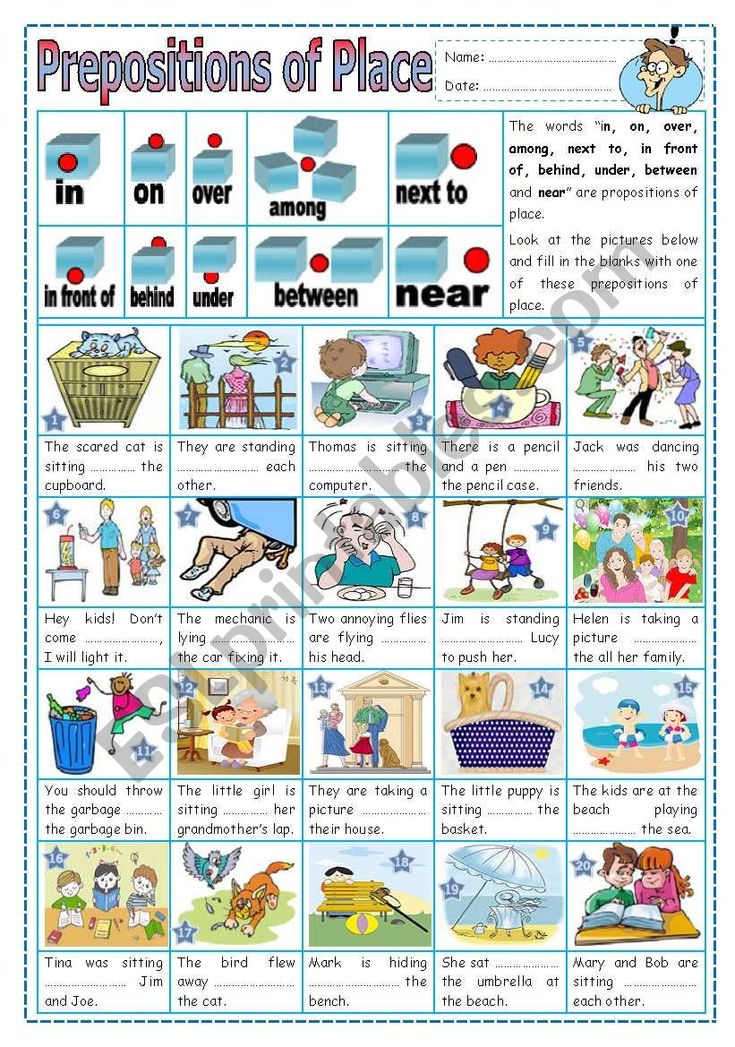
Play hide and seek today
I don't feel like it anymore,
Now let them look for me.
And flopped into the swamp. (A. Prokofiev)
“Find the mistake”
Invite the child to find what mistakes Dunno made. When thinking of sentences with mistakes, include typical mistakes of your child in them. Complement these difficult cases for the child to use prepositions with just fun and easy examples so that the child enjoys playing this speech game and to laugh with him. For example,
We went to the store (we went to the store)
- I picked an apple from a tree (I picked an apple from a tree)
- Chicks fell out of the nest (chicks fell out of the nest)
- I will take a toy from the closet (I will take a toy from the closet)
- The cat jumped from the chair (the cat jumped from the chair)
8 slide Didactic games for teaching children the ability to correctly use prepositions in speech
Formation of the correct use of prepositions in children with general underdevelopment of speech
One of the areas of corrective work on the formation of lexical and grammatical categories in children with general underdevelopment of speech is learning to understand and use prepositions.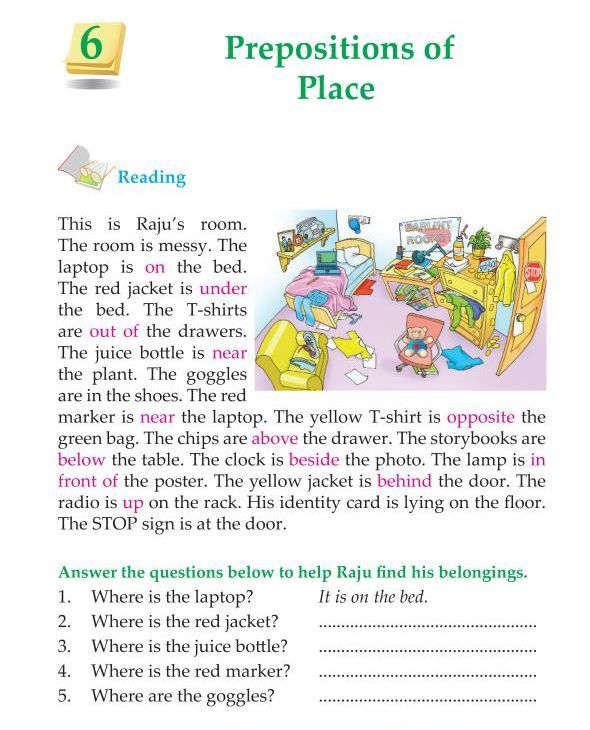 Limited verbal communication lag in the development of cognitive activities do not allow children to independently master prepositional structures. Necessary help children learn the rules of change and word combinations, teach to convey accurately semantic intention with the help of linguistic means.
Limited verbal communication lag in the development of cognitive activities do not allow children to independently master prepositional structures. Necessary help children learn the rules of change and word combinations, teach to convey accurately semantic intention with the help of linguistic means.
Prepositions are the last to appear in the child's speech important parts of speech. characteristic the regularity of the normal development of children's speech is the fact that the assimilation of prepositions carried out only after learned the most functional elements of the language - inflections (endings).
In children with O.N.R. the same sequence in the assimilation of speech, as in normally developing peers, but more extended deadlines. Therefore, speech therapy on the formation of the correct use prepositions in children with O.N.R. based on the sequence in the assimilation of prepositions is normal.
At speech therapy classes on the formation of children correct use of prepositions in speech learn to understand the spatial relationship of two objects expressed by prepositions on, in, at, under, about et al.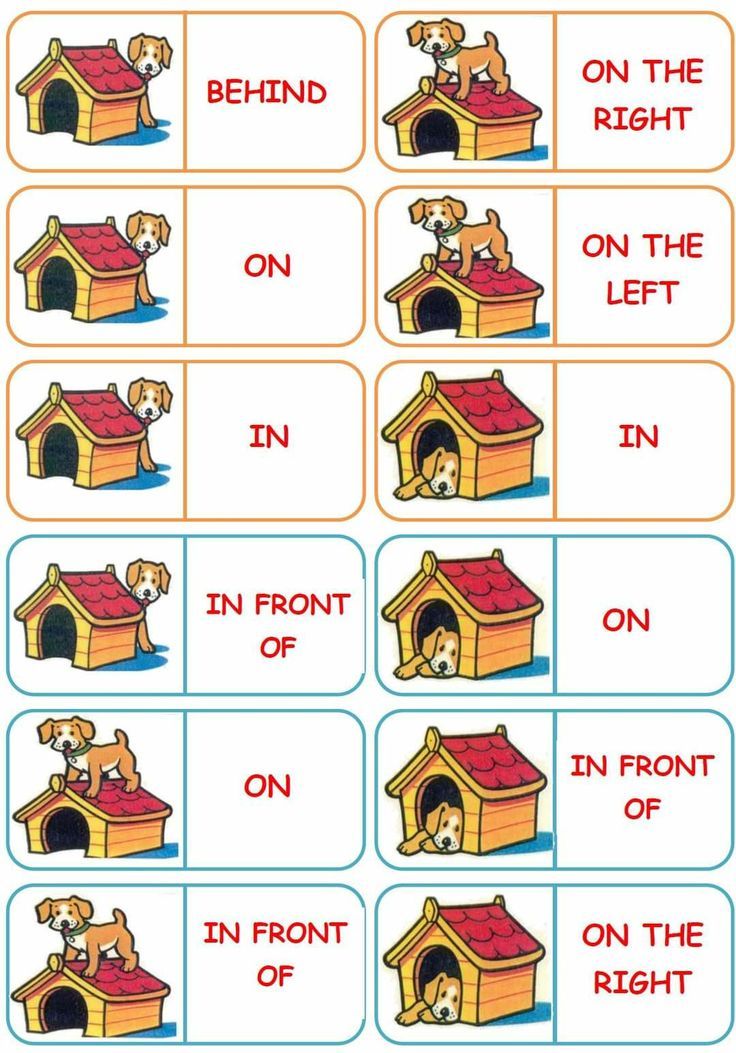 most common in daily practice and the easiest to semantic relationship. Classes are held subgroups, alternating with the lessons of the educator in the form of didactic games, game exercises, entertaining tasks. To get attention children use toys for sounding speech, fairy tale characters well known to children items. Children need to be taught carefully listen to instructions, do it right required action. For example, a speech therapist puts the cube on the table and says: “The cube is on the table.” Preposition to is voiced. The kids do it same. Then each child is asked where he is put down the cube. If the child cannot answer himself, the speech therapist does it for him. Children are first taught use a preposition in phrases, then in phrases, without achieving clarity of pronunciation of words. After getting acquainted with several prepositions work is underway to differentiate them. For example, they ask the child to show where the pencil is. lies in box, and where is on box; where is the ball lies on chair , and where is under chair .
most common in daily practice and the easiest to semantic relationship. Classes are held subgroups, alternating with the lessons of the educator in the form of didactic games, game exercises, entertaining tasks. To get attention children use toys for sounding speech, fairy tale characters well known to children items. Children need to be taught carefully listen to instructions, do it right required action. For example, a speech therapist puts the cube on the table and says: “The cube is on the table.” Preposition to is voiced. The kids do it same. Then each child is asked where he is put down the cube. If the child cannot answer himself, the speech therapist does it for him. Children are first taught use a preposition in phrases, then in phrases, without achieving clarity of pronunciation of words. After getting acquainted with several prepositions work is underway to differentiate them. For example, they ask the child to show where the pencil is. lies in box, and where is on box; where is the ball lies on chair , and where is under chair .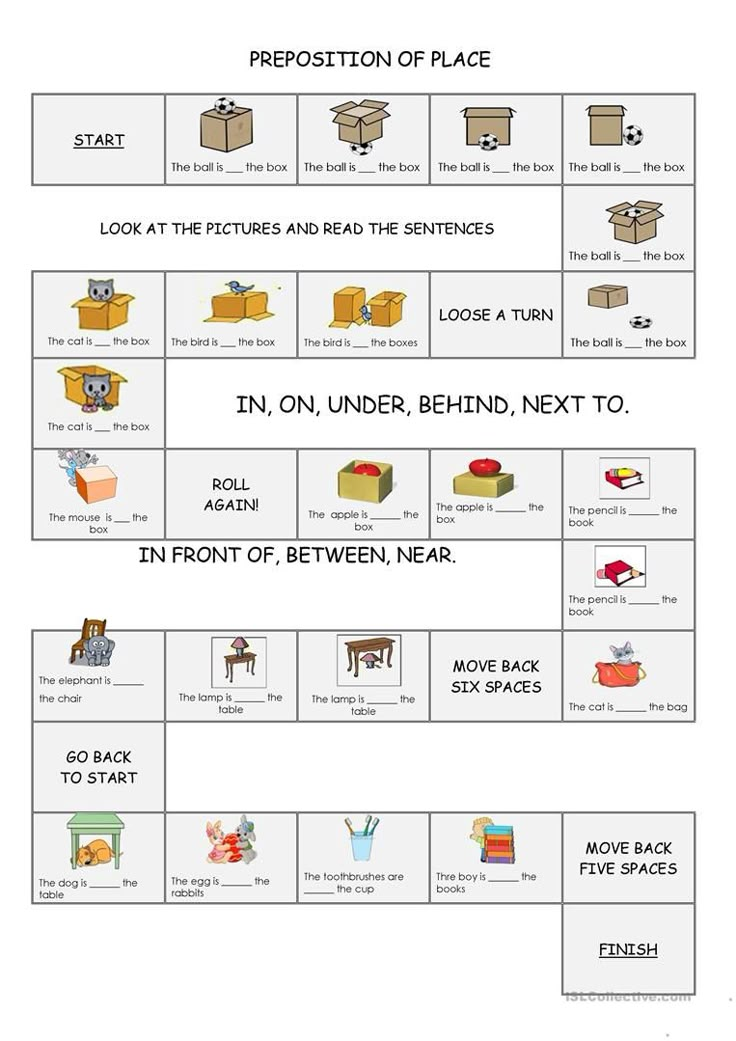
Skills for correct understanding and use suggestions are fixed by educators on private lessons held in the second half a day, as well as during all regime moments. Great help can be provided parents. During consultations, encourage them to play with their children at home in such games like “Who hid where?”, “What’s on the Christmas tree, and what (who) is under the tree?”, “Cat’s house” and others.
Children of senior preschool age (levels 2-3 speech underdevelopment) get acquainted with prepositions on the material of phrases and simple phrases. You need to start learning with the simplest prepositions on, under, denoting a place actions and easily modeled in the process visual demonstration. Clarifies understanding children of spatial arrangement objects expressed by these prepositions. For example, clearly highlighting the preposition by , The speech therapist asks you to follow these instructions:
- Put the cup on the table and the car on the chair.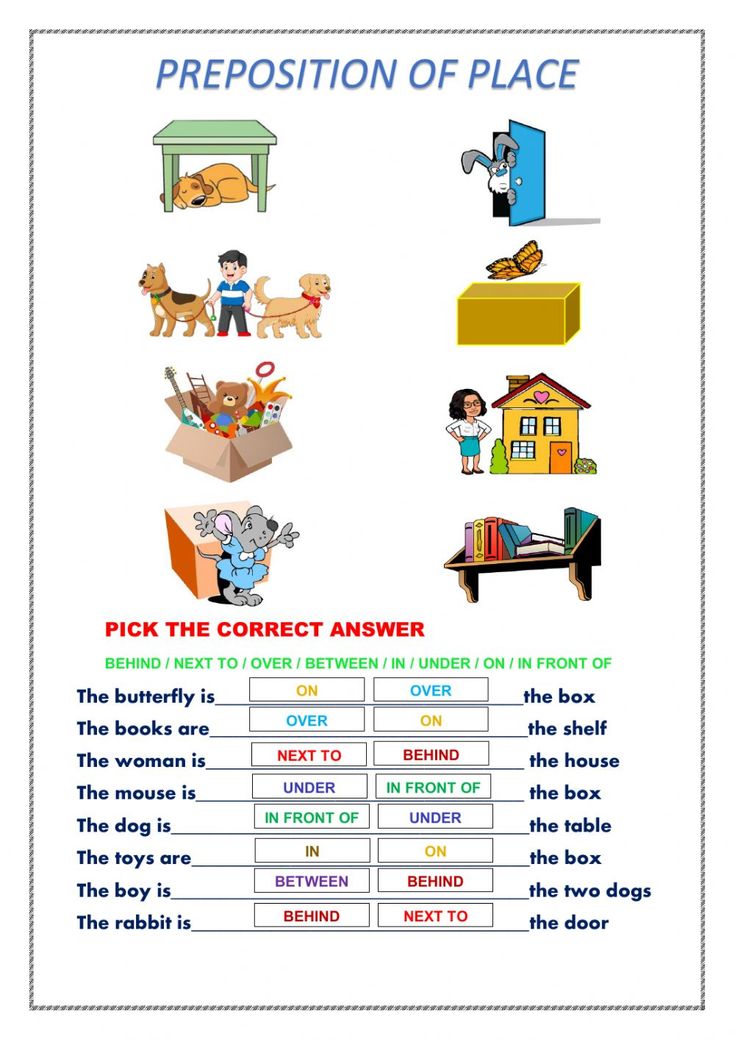
- Place book on table, ball on floor, and doll on bed.
When tasks with “small word to ” will run without errors, you can explain rule:
Small word to appears when the item is at the top.
After explaining the rule, the adult, followed by children pronounce word combinations with a preposition to , emphasizing the suggestion with a voice. Then make up offers. In the classroom, not only items in the group (toys, furniture, dishes), but also picture material. Reliance on visual analyzer always gives a positive effect, therefore, in addition to plot and subject pictures, you can use preposition schemes.
After mastering preposition on, to be confirmed spatial arrangement of objects expressed by the preposition under . Children are learning highlight the preposition under in the sentence and make phrases and sentences with it pretext according to the visual situation, according to the plot pictures, according to two subject pictures. After mastering grammatical constructions with prepositions to and to , work is underway on their distinction. A speech therapist gives children a "truncated task”:
After mastering grammatical constructions with prepositions to and to , work is underway on their distinction. A speech therapist gives children a "truncated task”:
- Put the ball ... a chair, and the fungus ... a table, - and asks: - It is clear how to perform actions? I missed small but very important words. Now listen again: Put ball under chair, and fungus to table. Same or different actions to be taken? What is the difference?
It is necessary to teach children to differentiate tasks, listening to verbal instructions, keep the sequence in mind. Gradually, the tasks become more difficult: in a row “small words” should be highlighted, for example, words under and to . Hearing them in a row: on, from, in, under, about, between, over, the child should clap their hands.
You can offer the children an comprehension task generalized meaning of prepositions to and to : the book lies on the table . And where else can lie book? The ball fell under the table. Where else can he roll up? Children are taught to add to a sentence missed suggestions. When learning to use prepositions with different cases children get acquainted with new meanings of prepositions. At the end of the training years, children should be able to use simple prepositions in speech, make sentences with a given suggestion. Children of the seventh year of life O.N.R. cannot independently without special learning to master such more complex prepositions like: from under, from behind, between, over . They make mistakes by replacing and mixing prepositions.
And where else can lie book? The ball fell under the table. Where else can he roll up? Children are taught to add to a sentence missed suggestions. When learning to use prepositions with different cases children get acquainted with new meanings of prepositions. At the end of the training years, children should be able to use simple prepositions in speech, make sentences with a given suggestion. Children of the seventh year of life O.N.R. cannot independently without special learning to master such more complex prepositions like: from under, from behind, between, over . They make mistakes by replacing and mixing prepositions.
At the beginning of the academic year at speech therapy classes reinforce the knowledge and skills correct use of simple prepositions c, on, under, from, to, from, etc. . Children are introduced to new the concept of "preposition". In one of the first lessons children are told that our little Helper words are called prepositions.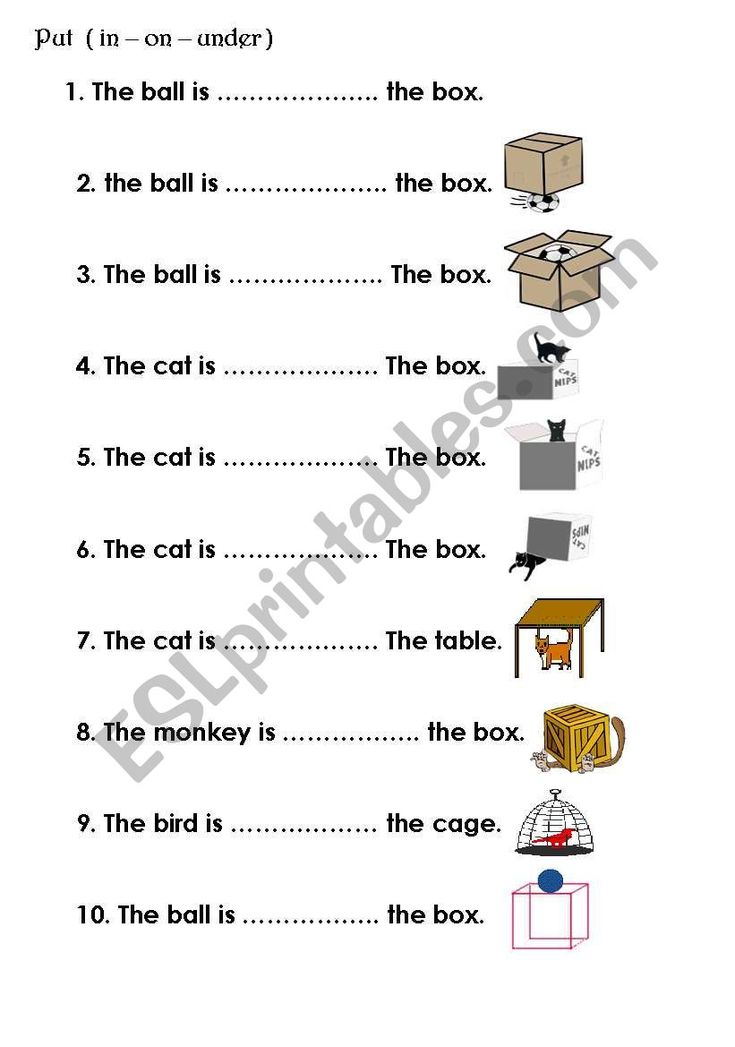
Then the children are introduced to prepositions due to, from under, with, with, over, employees as for designation spatial arrangement of objects and joint action. In frontal lessons children clarify spatial relationships, expressed by these prepositions, learn to highlight these prepositions in the text and make sentences with a given preposition according to a picture, diagram, visual situations, according to two key words. Children are learning include the missing preposition in the sentence, lay out sentence schemes with prepositions. Learn to single out a preposition as a separate service word. Skills acquired are reinforced subgroup and individual lessons.
Problems of remedial education are solved joint efforts of a speech therapist and educators, in close contact with parents. General efforts to teach children speech therapy group to use correctly as simple and complex prepositions in speech, help learn the rules for connecting words, teach exactly convey meaning through linguistic means.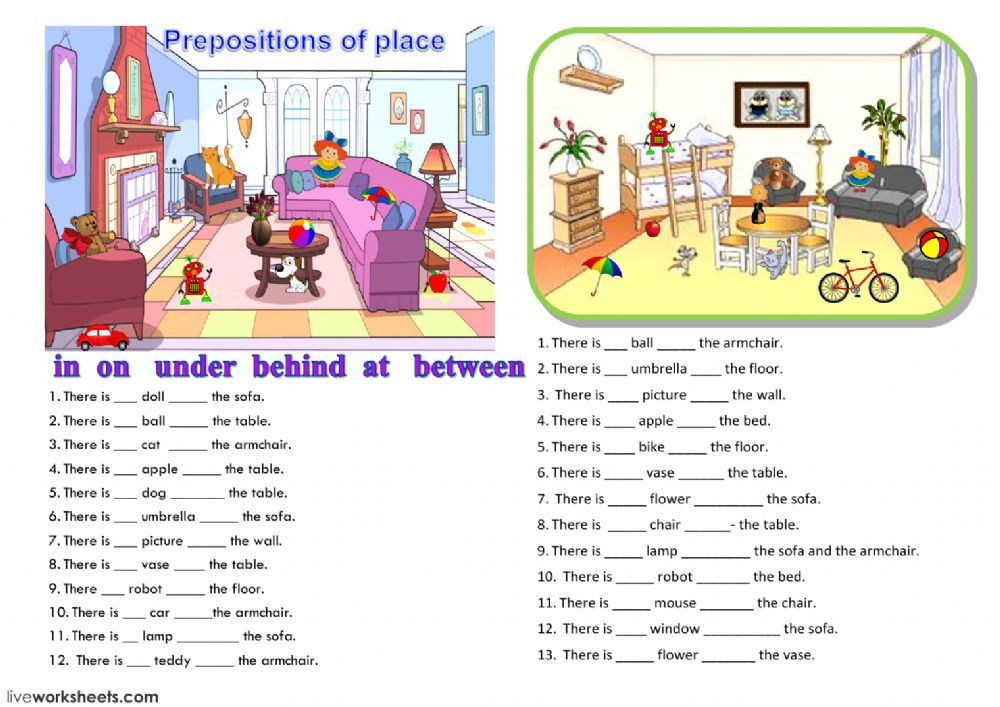 This is essential for learning at school, communicating with adults and children, formation of personal qualities of the child.
This is essential for learning at school, communicating with adults and children, formation of personal qualities of the child.
References
- Filicheva T.B., Chirkina G.V., Tumanova T.V., Mironova S.A., Lagutina A.V. preschool programs compensatory educational institutions type for children with speech disorders. Moscow. “Enlightenment” 2008.
- Education and upbringing of preschool children with speech disorder. Editor-compiler Mironova S.A. Moscow. "Enlightenment" 1989.
- Zhukova N.S., Mastyukova E.M., Filicheva T.B. Overcoming the general underdevelopment of speech in preschoolers. Moscow. “Enlightenment” 1990.
- Filicheva T.B., Chirkina G.V. Eliminate common underdevelopment of speech in preschool children. Practical guide. Iris Press. Moscow 2007.
- Krause E. Speech therapy. Saint Petersburg. "Crown print” 2003.
- Tkachenko T.
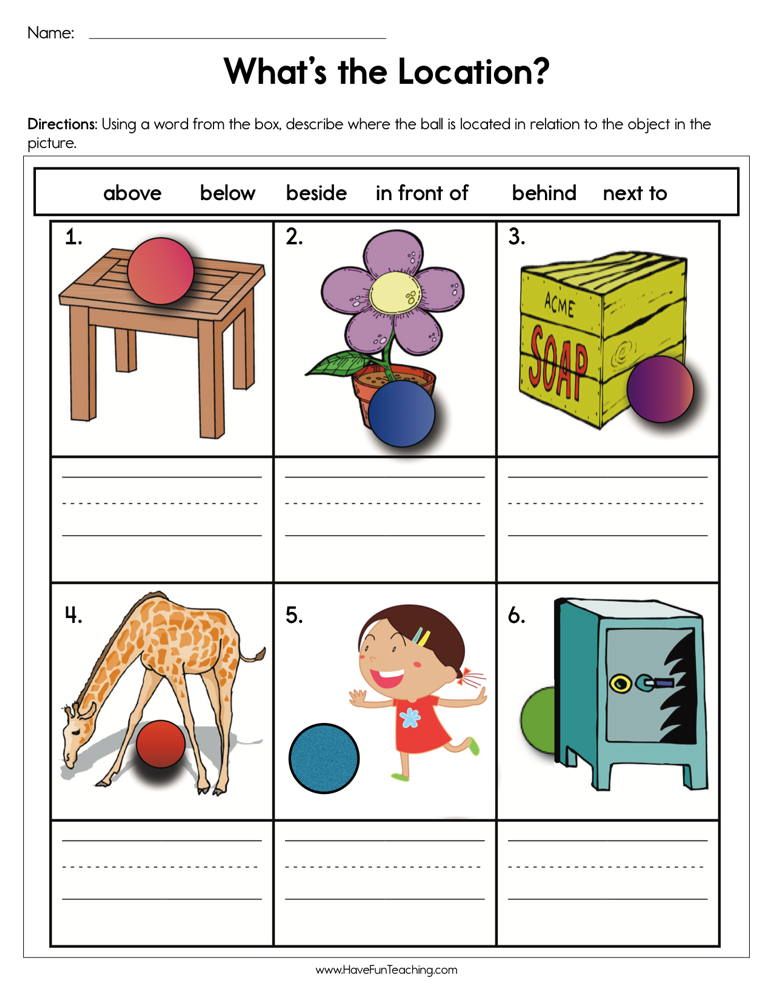
Learn more



